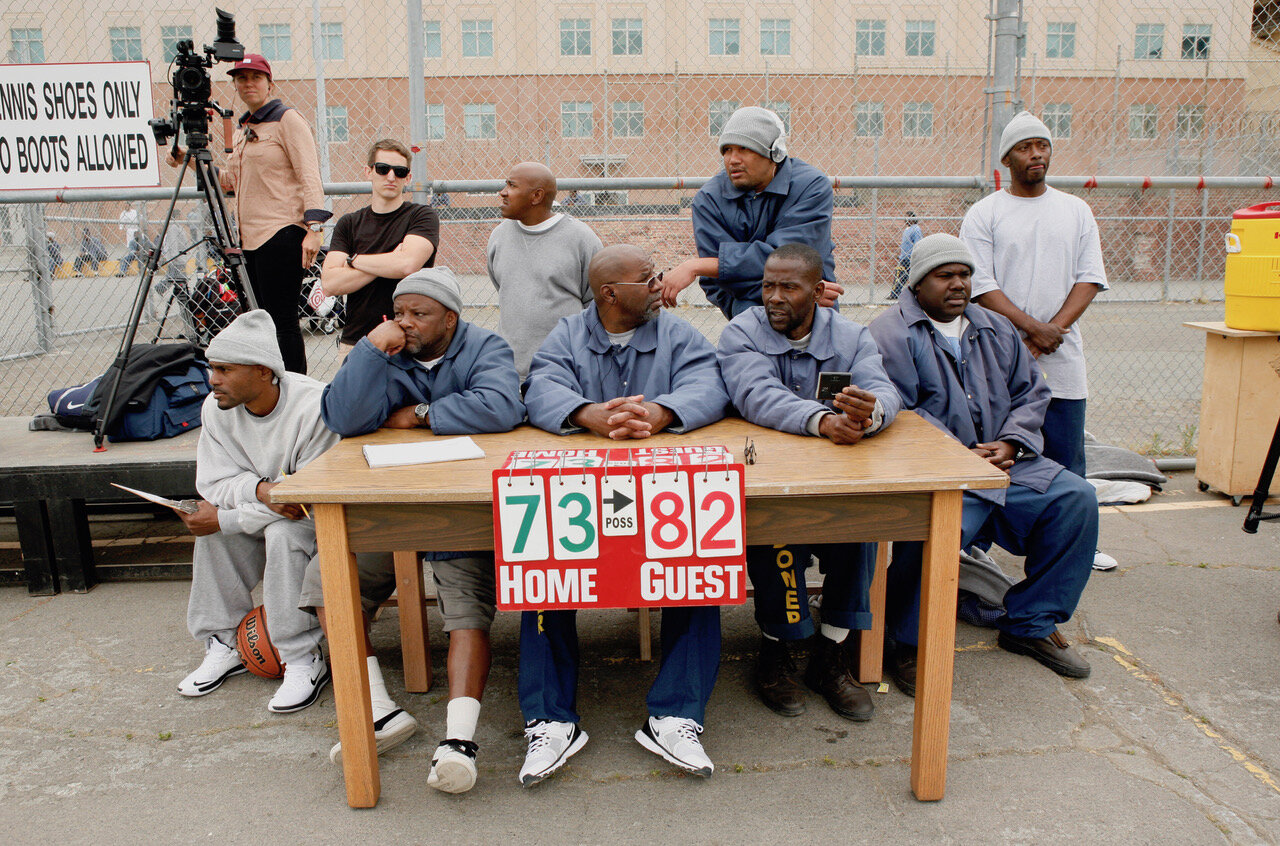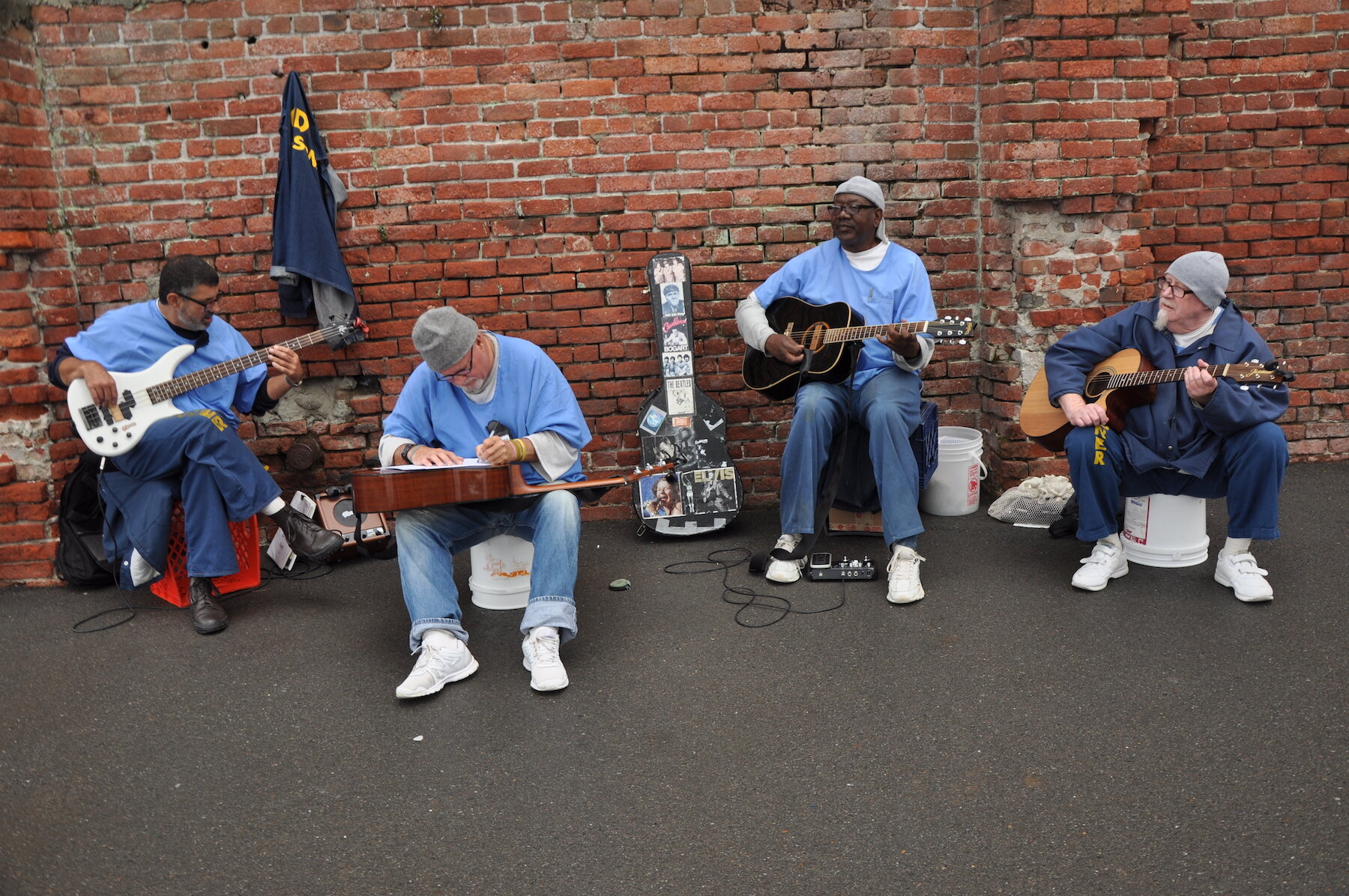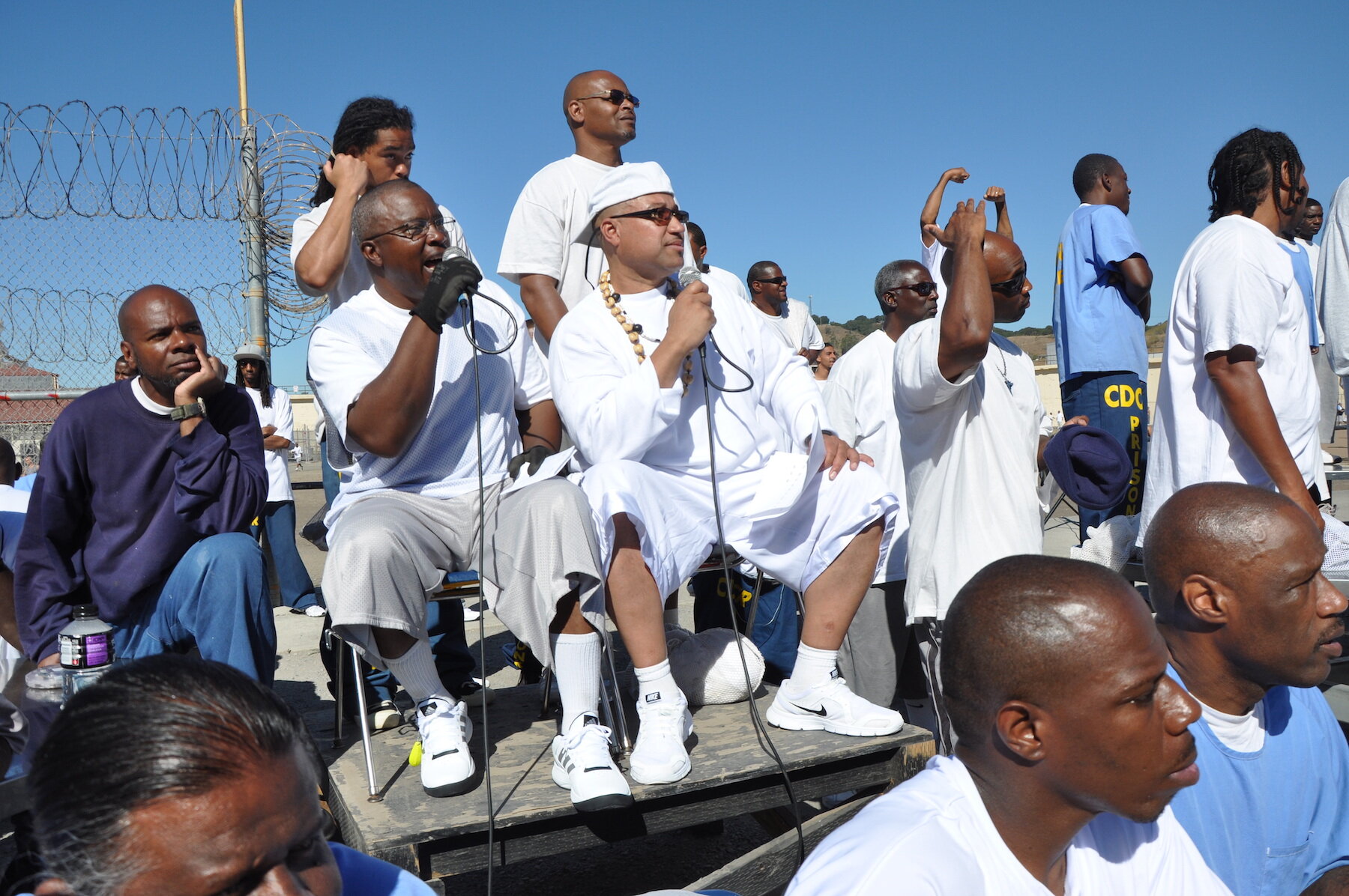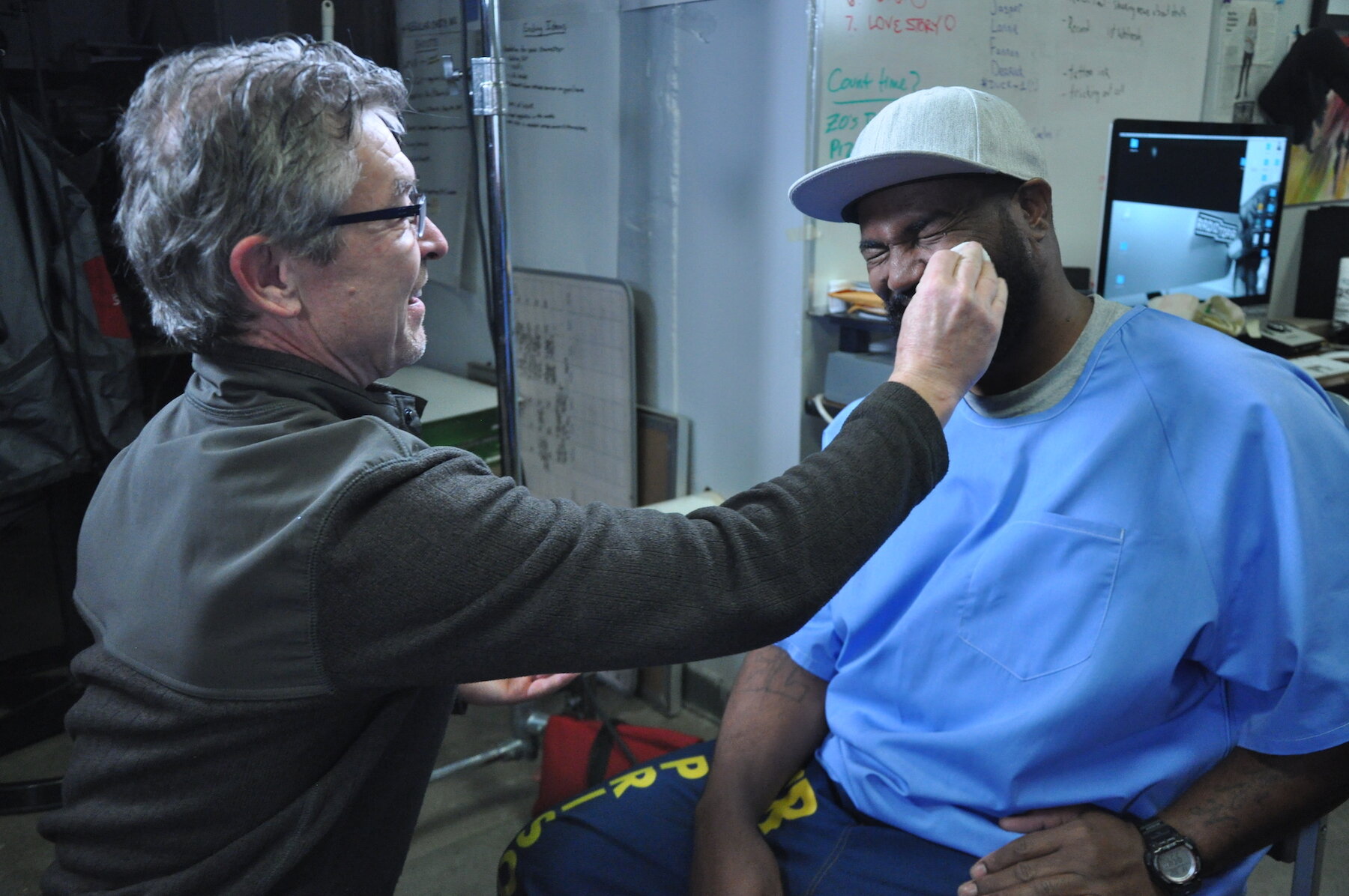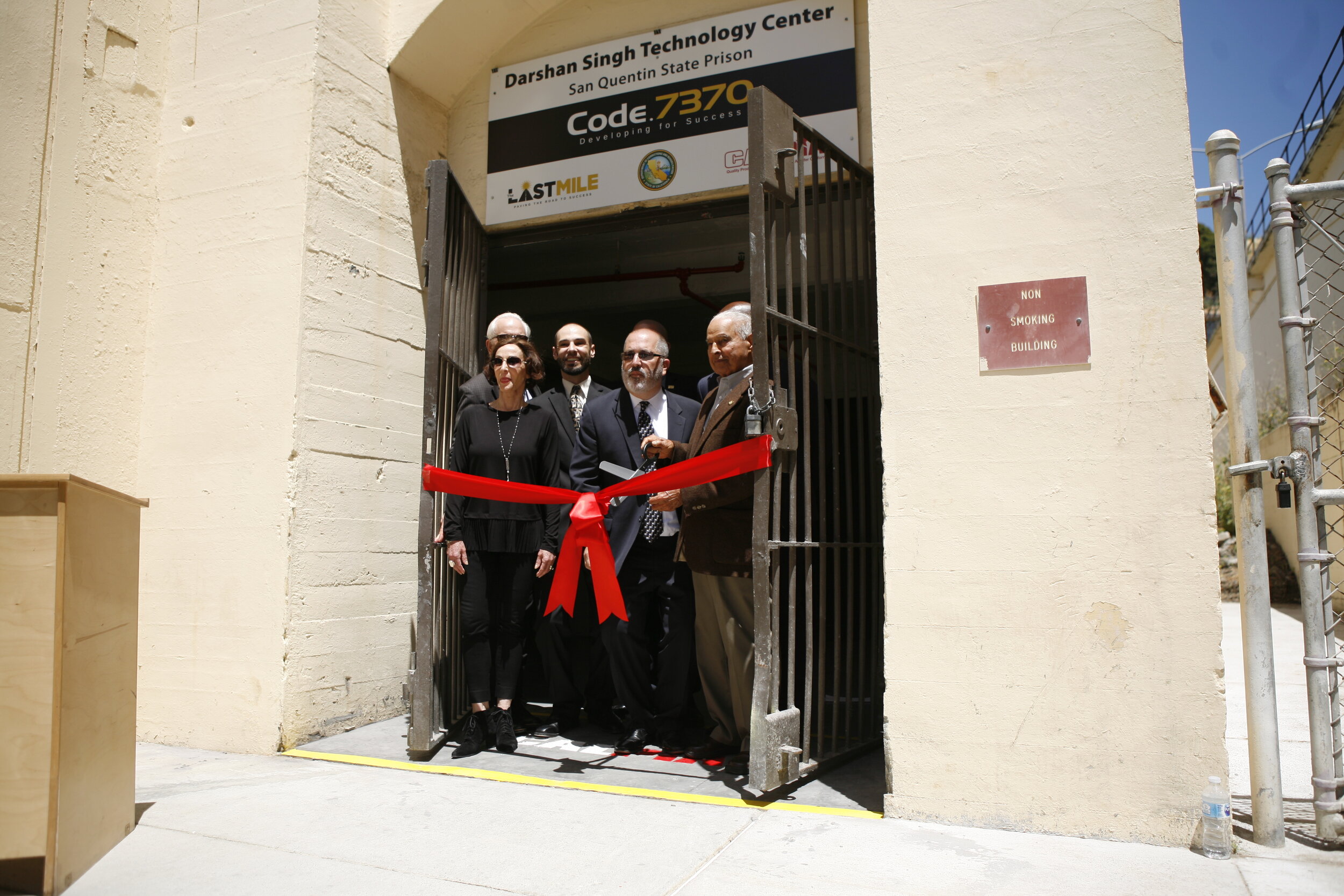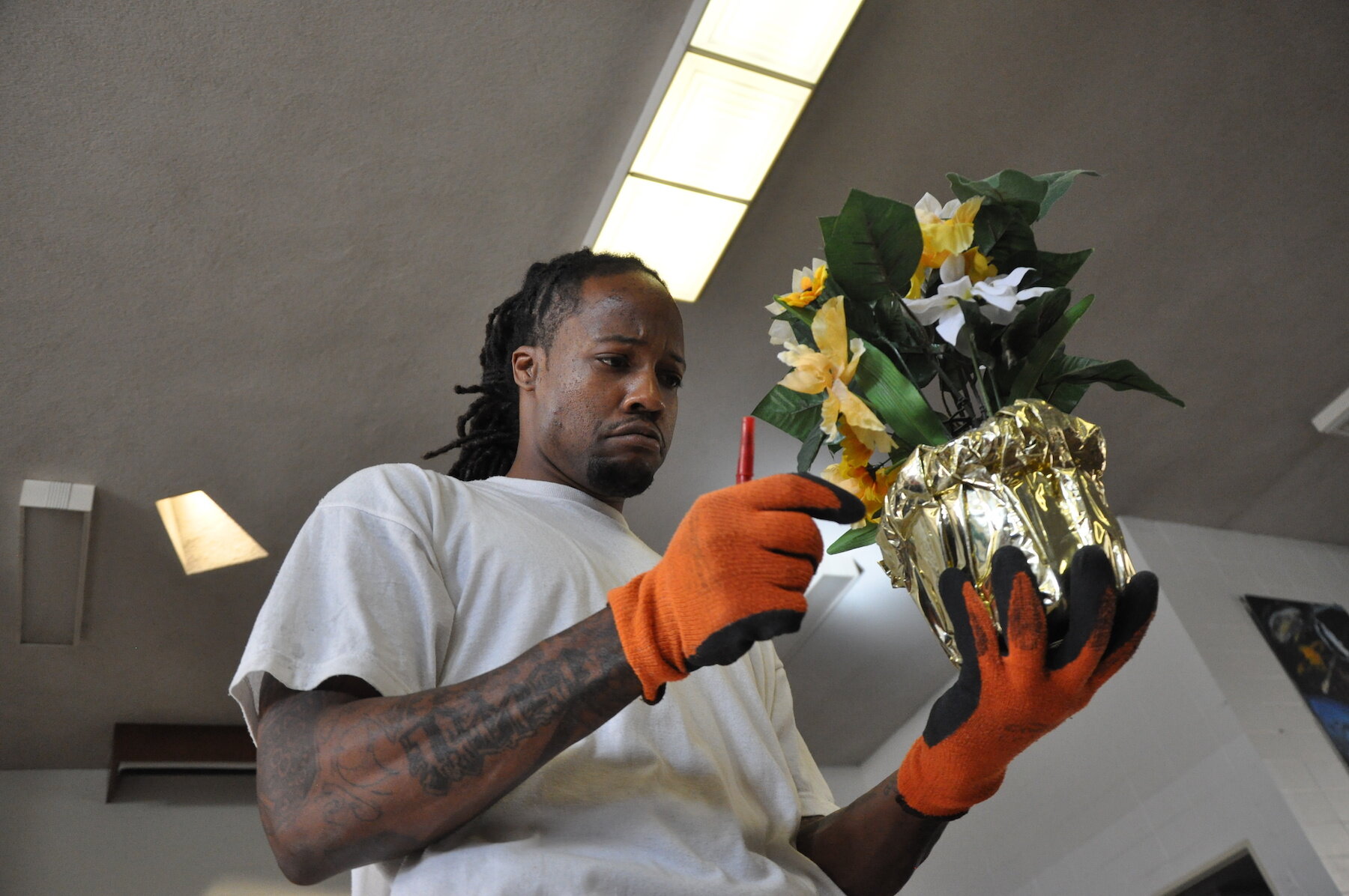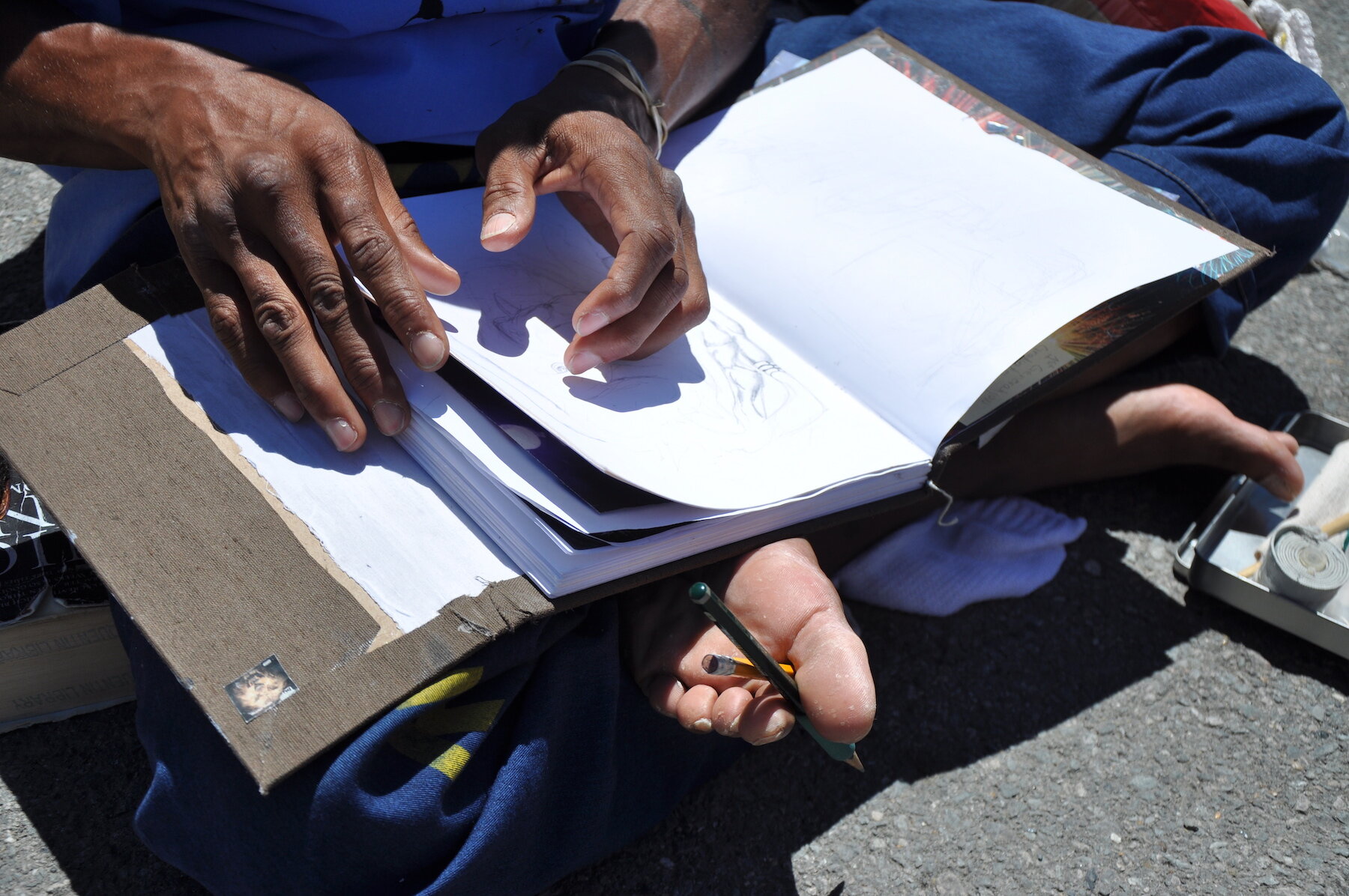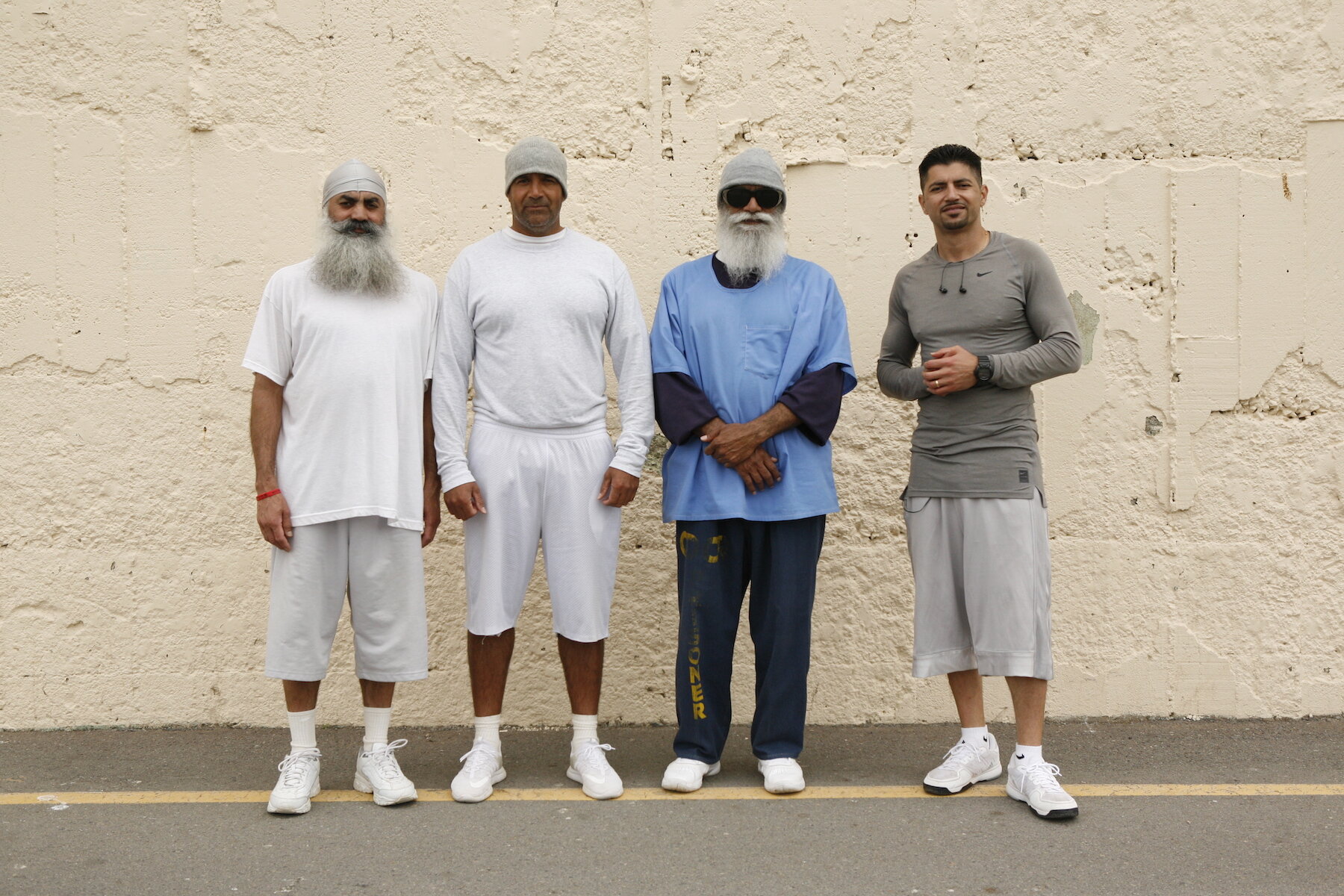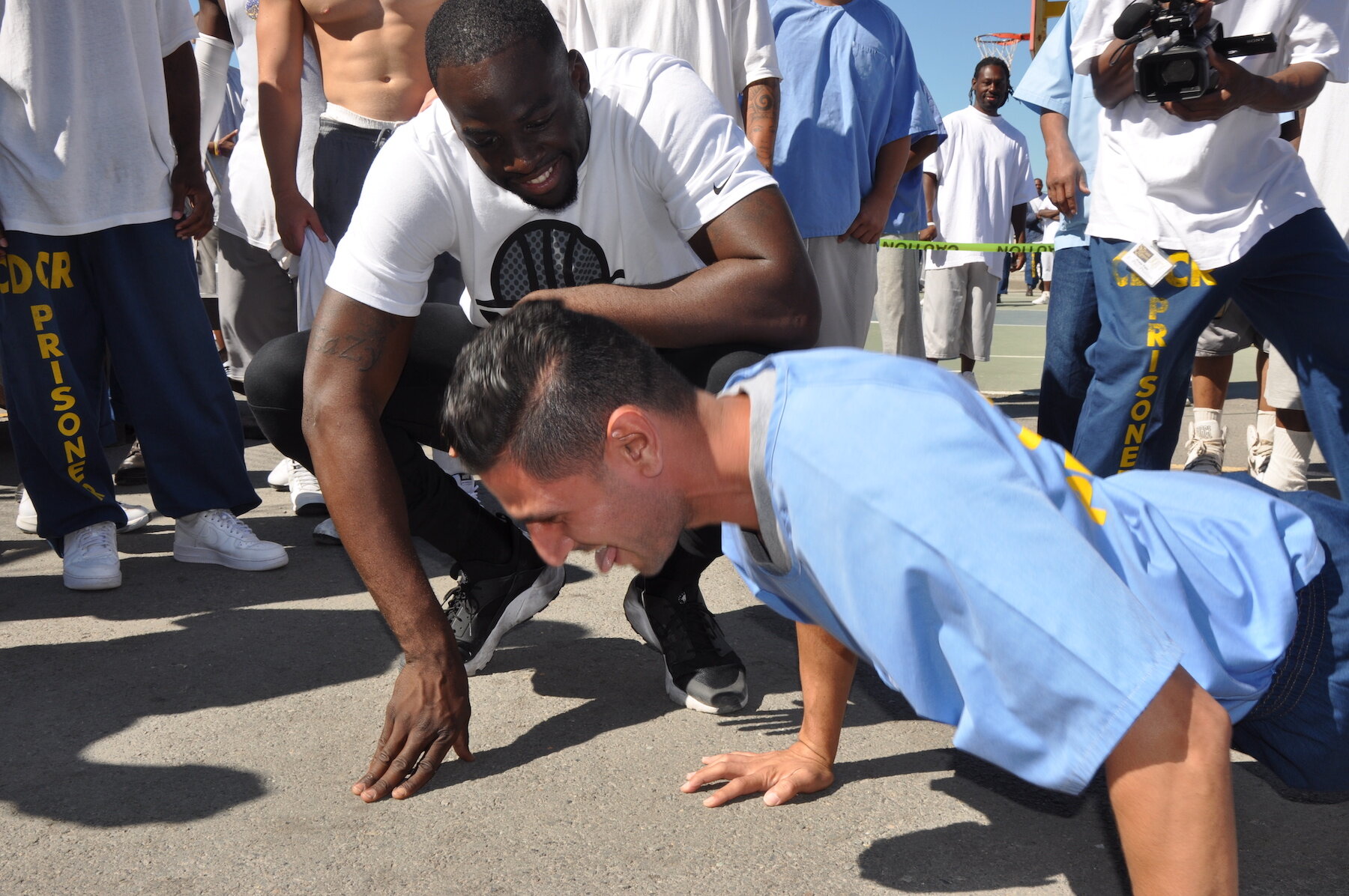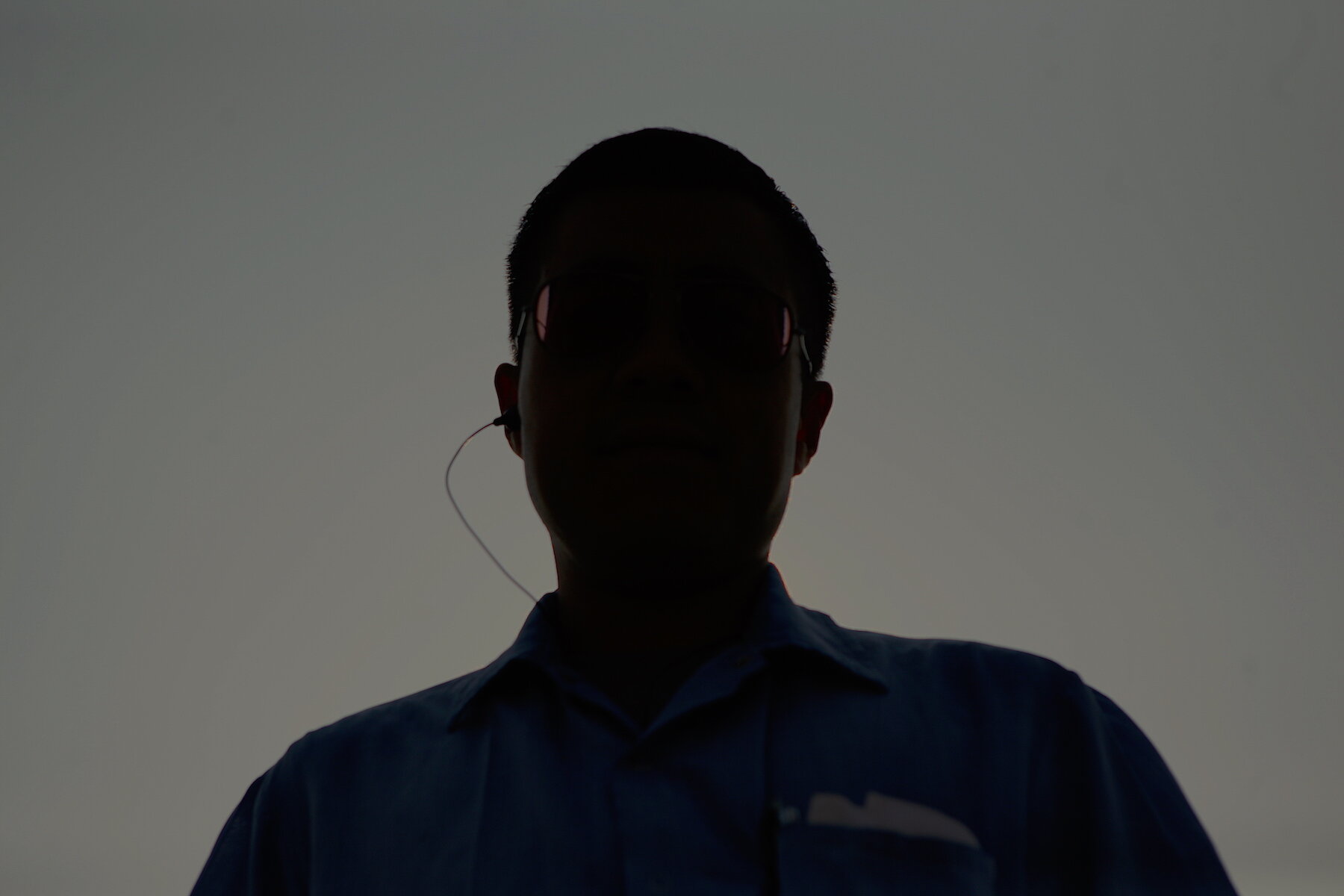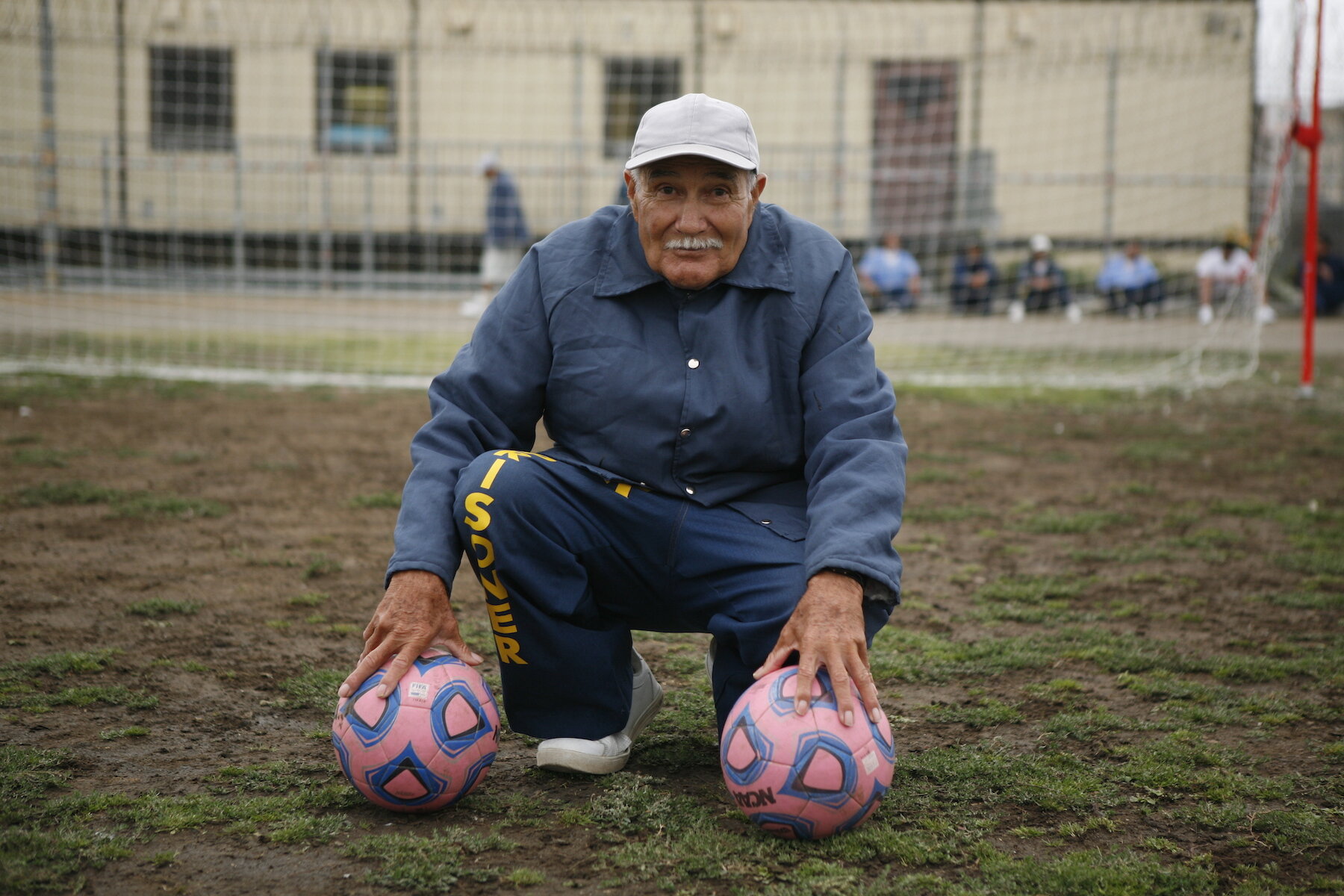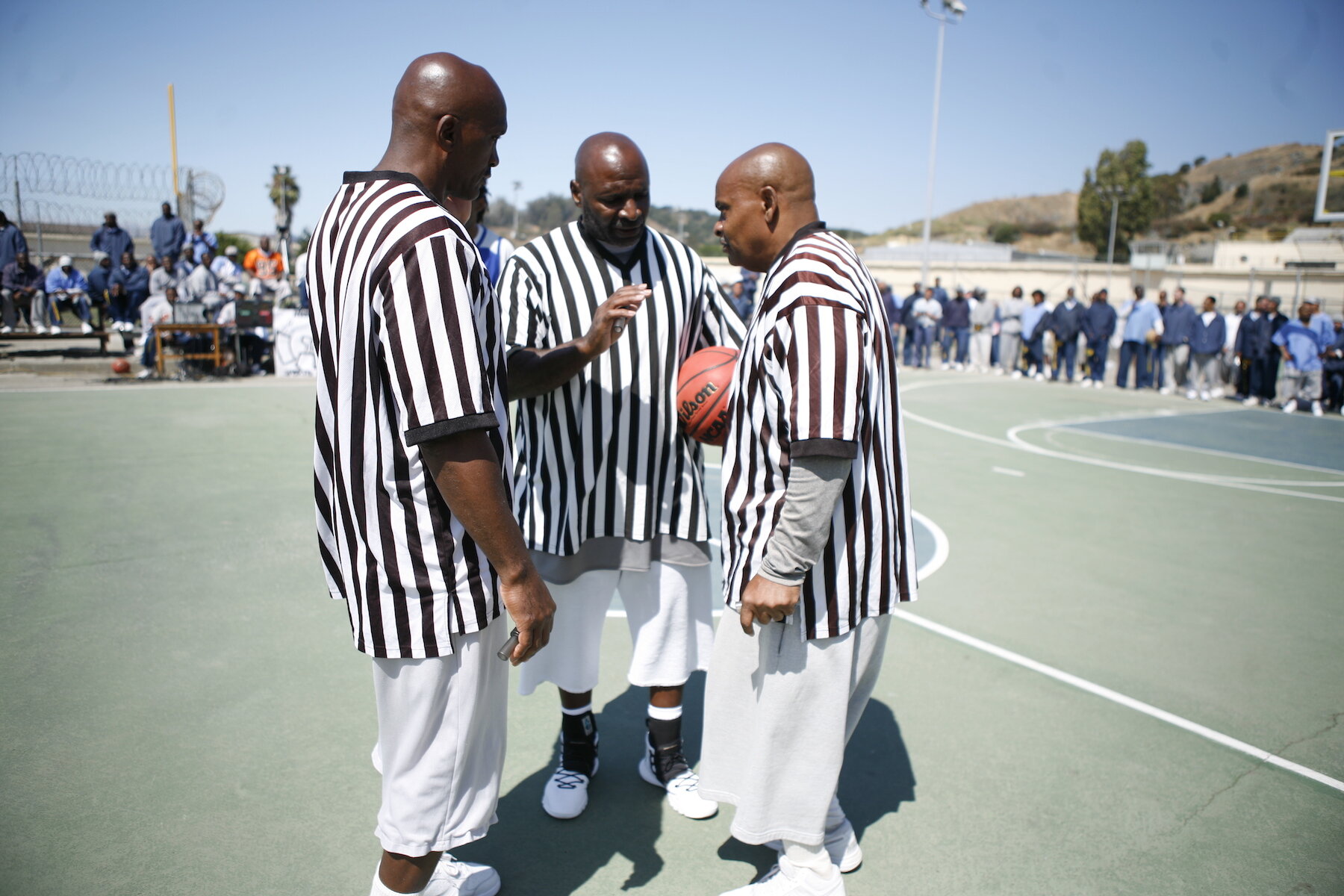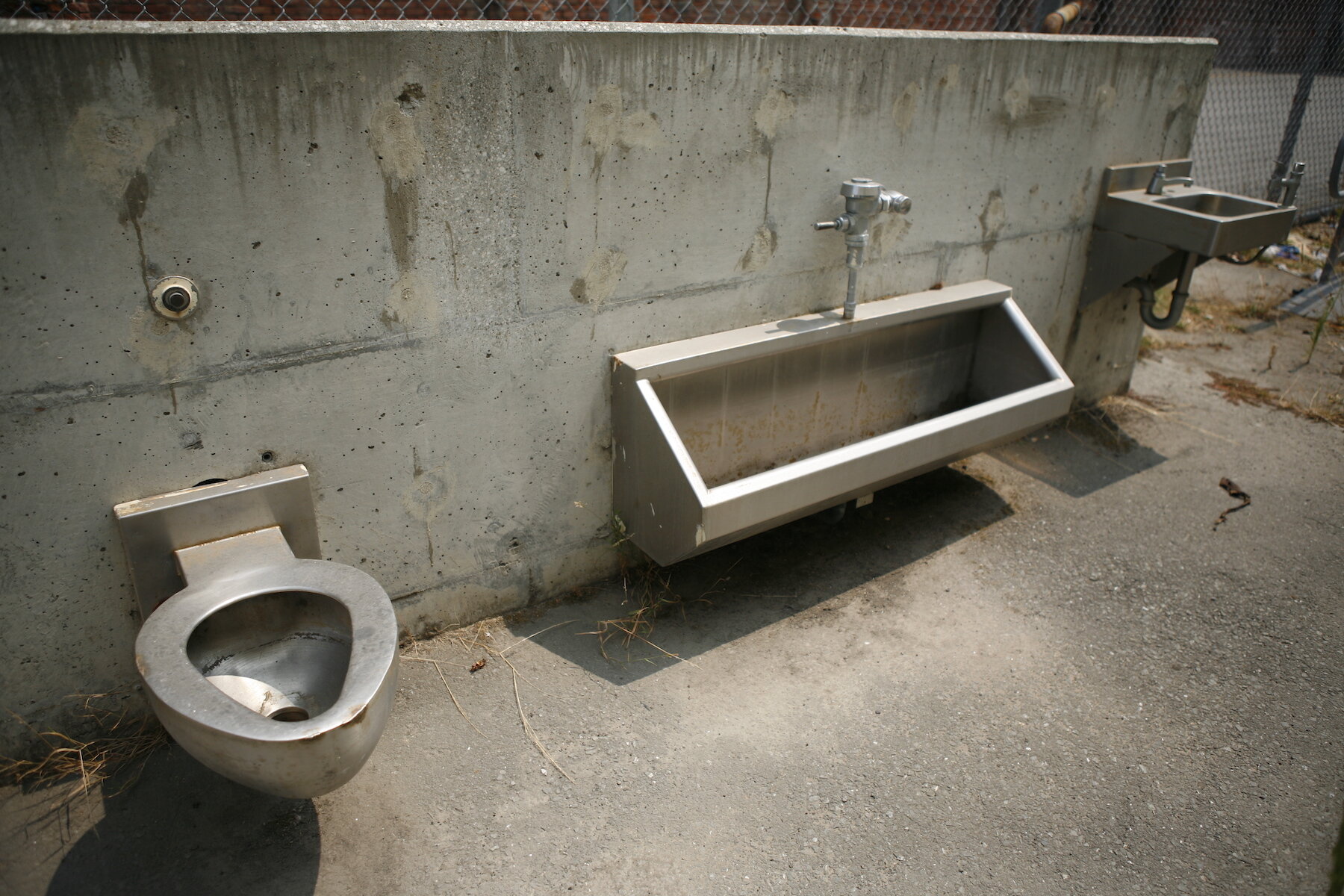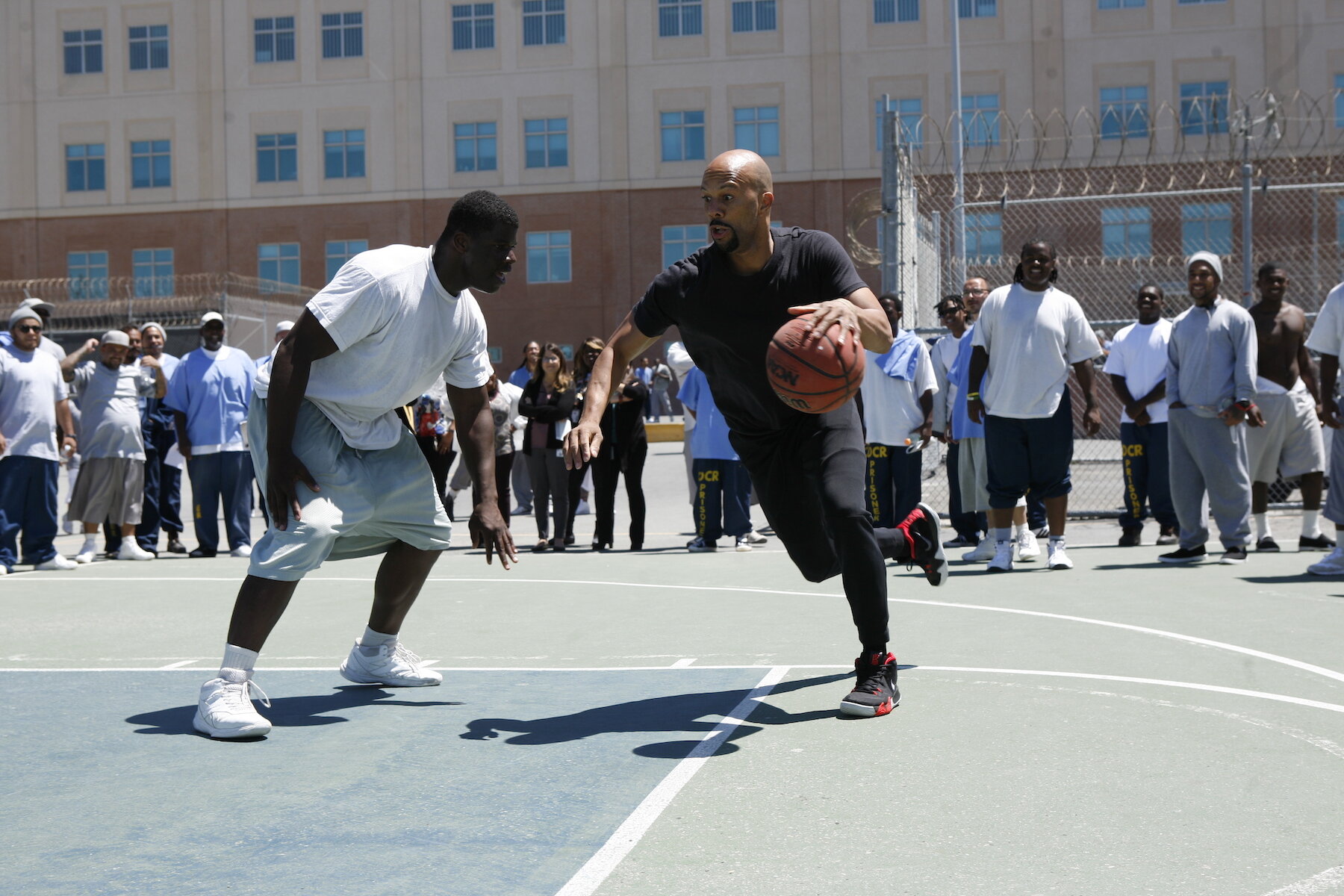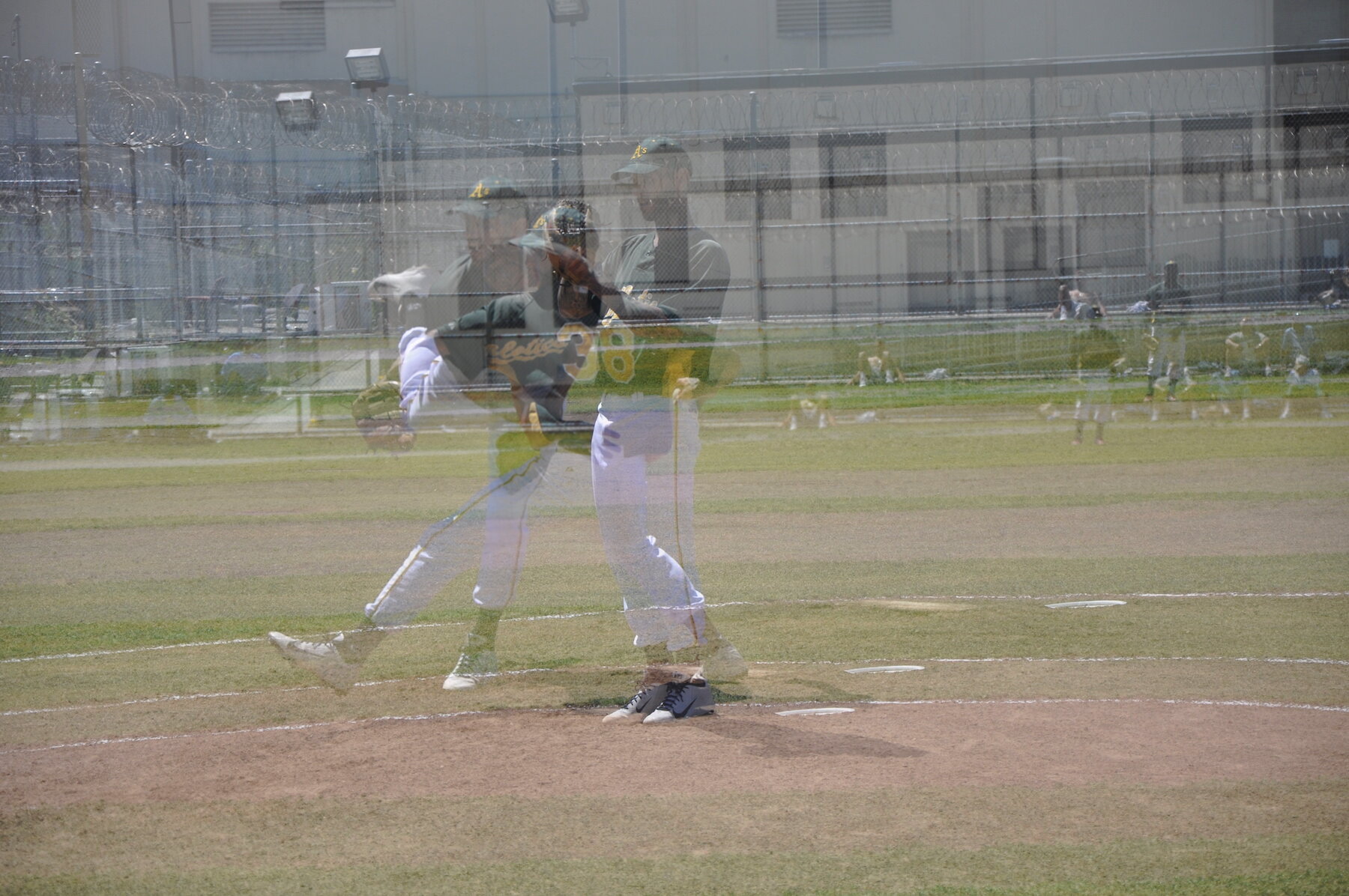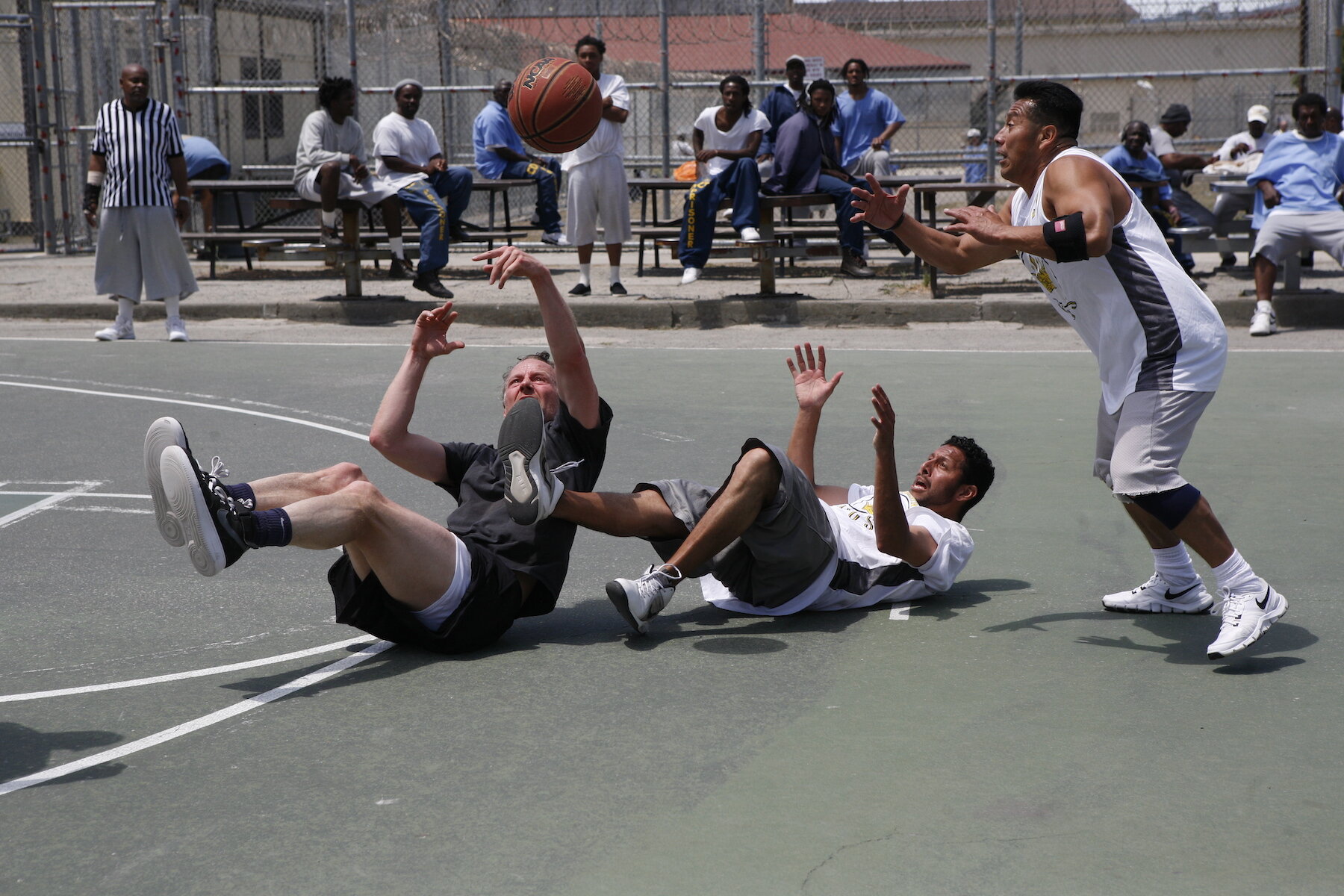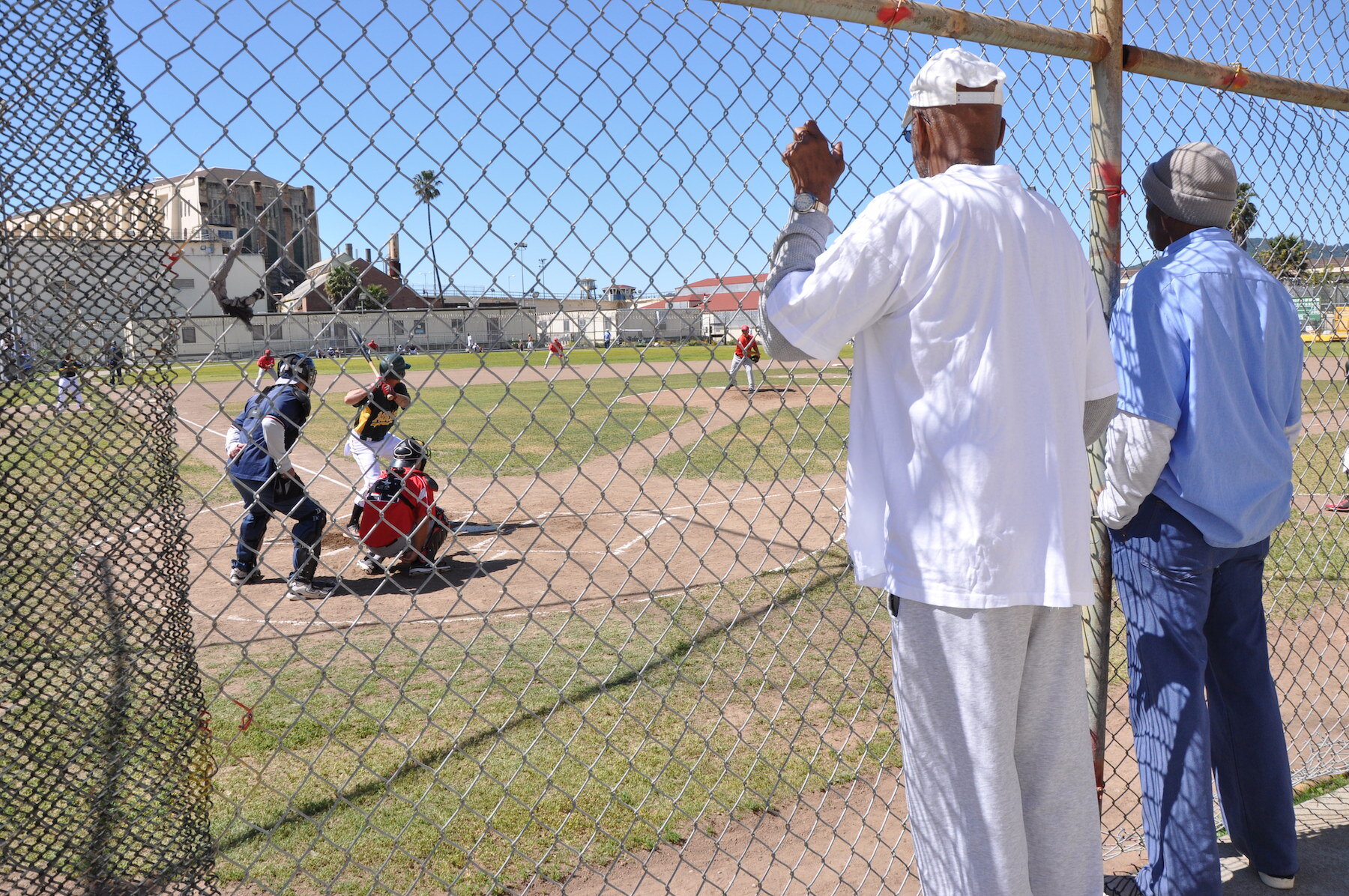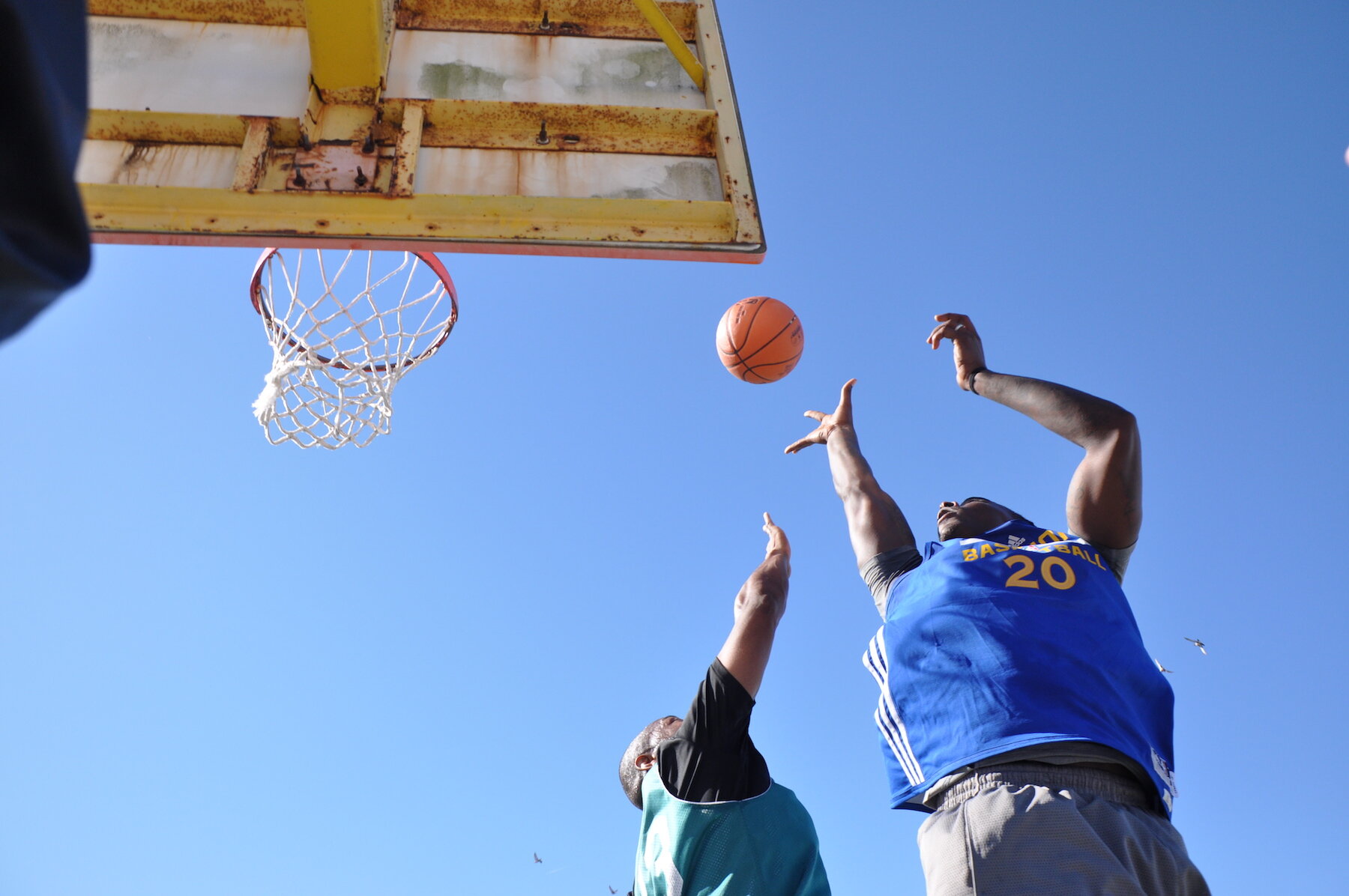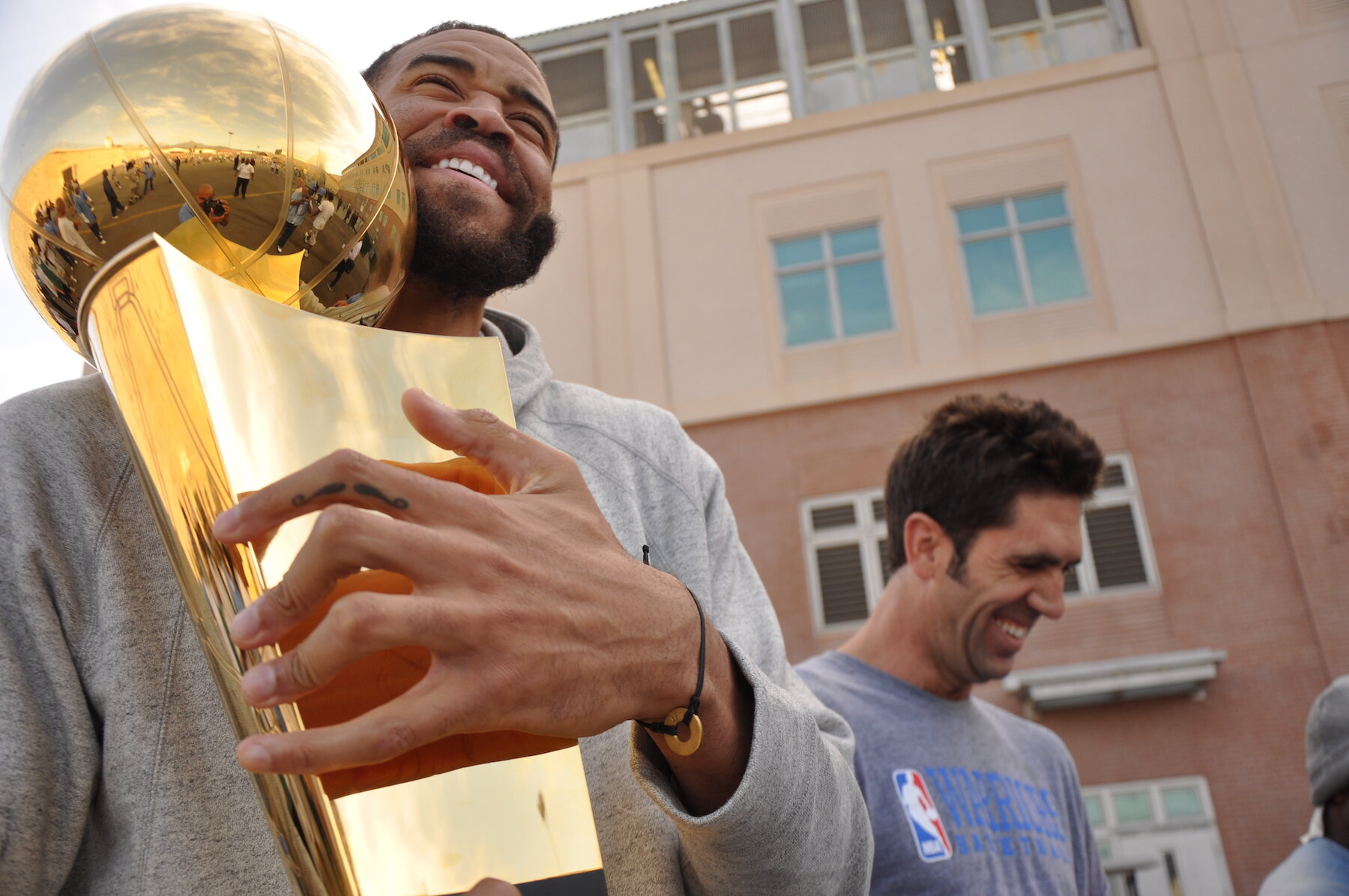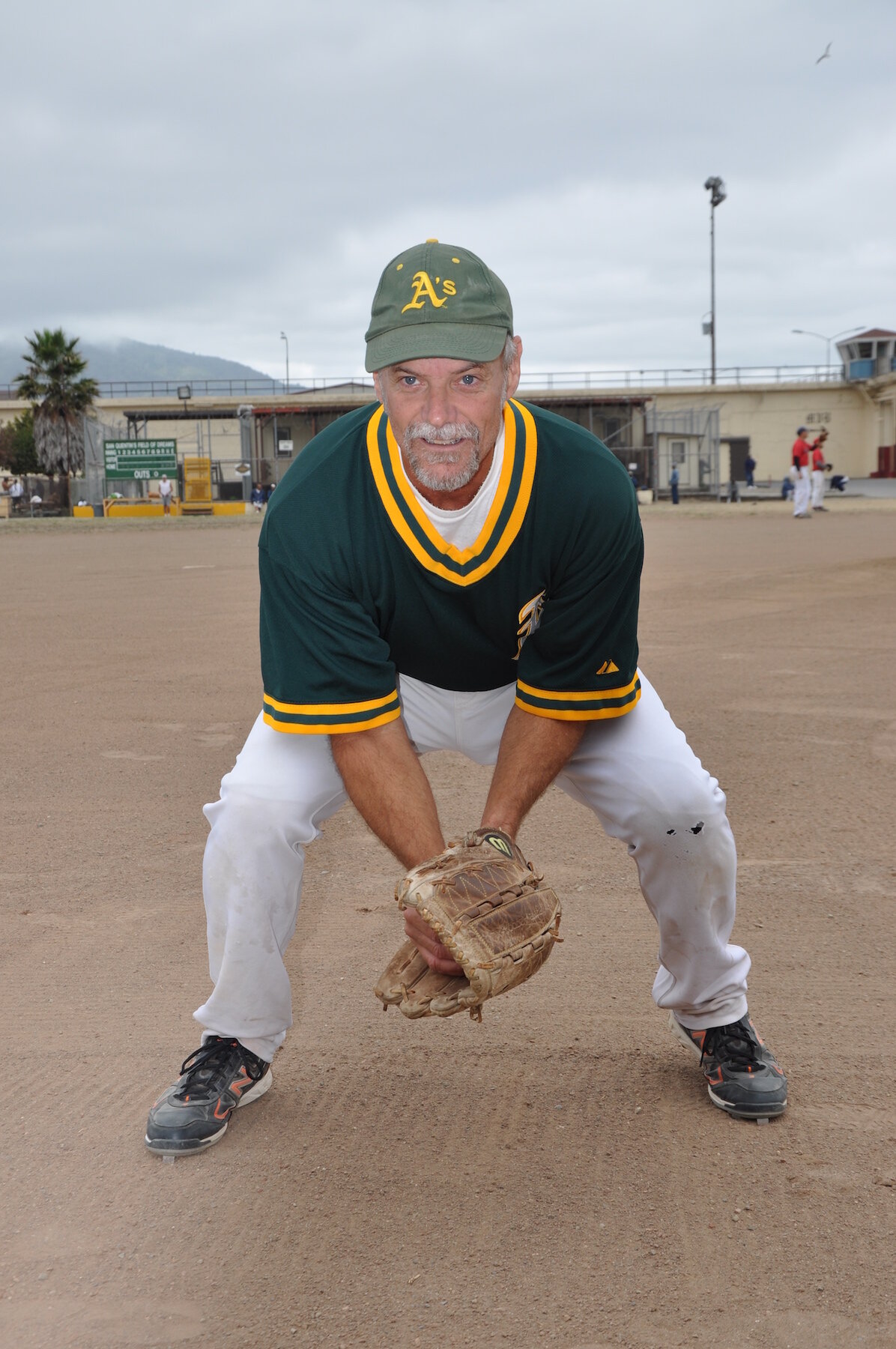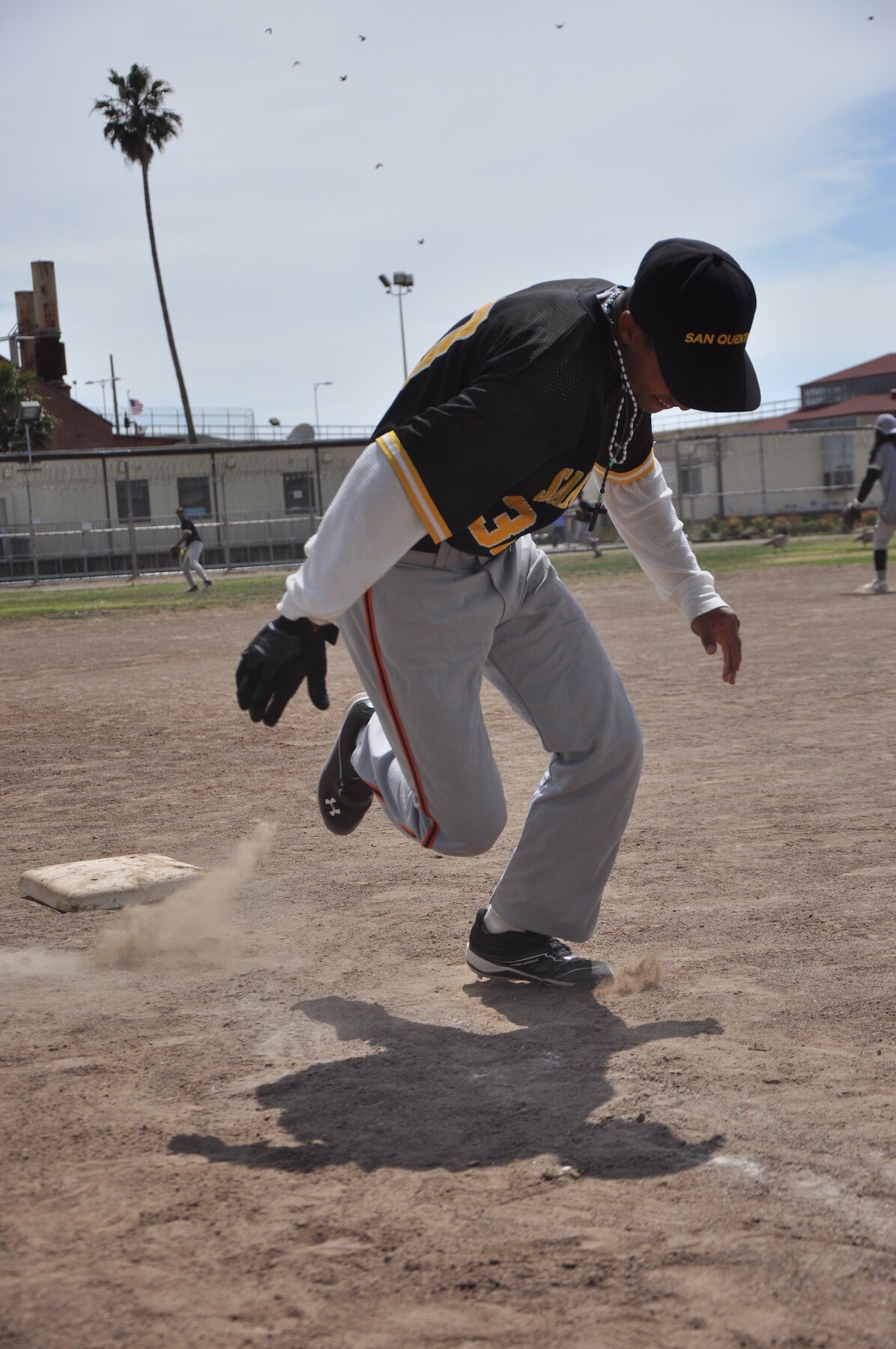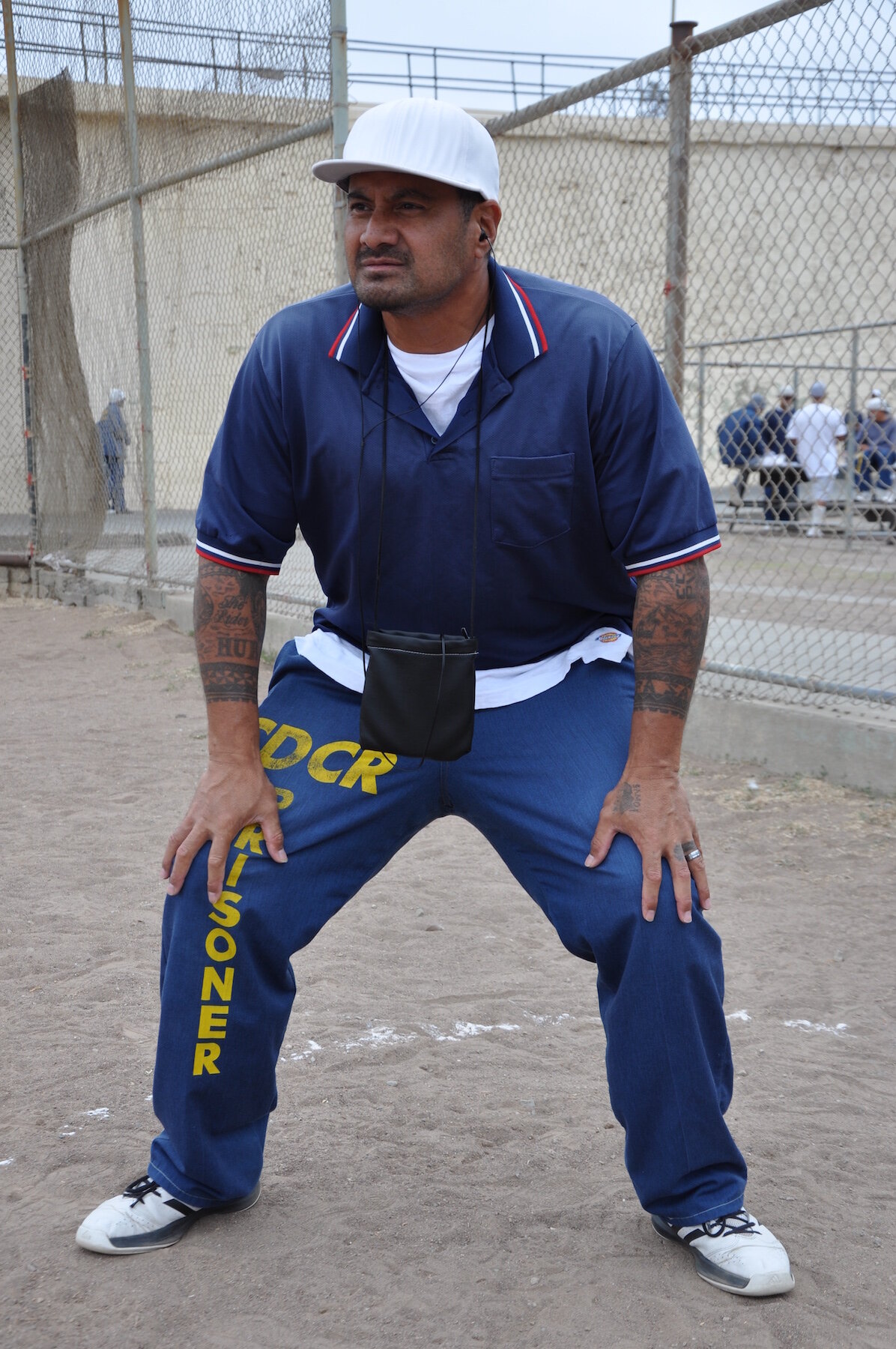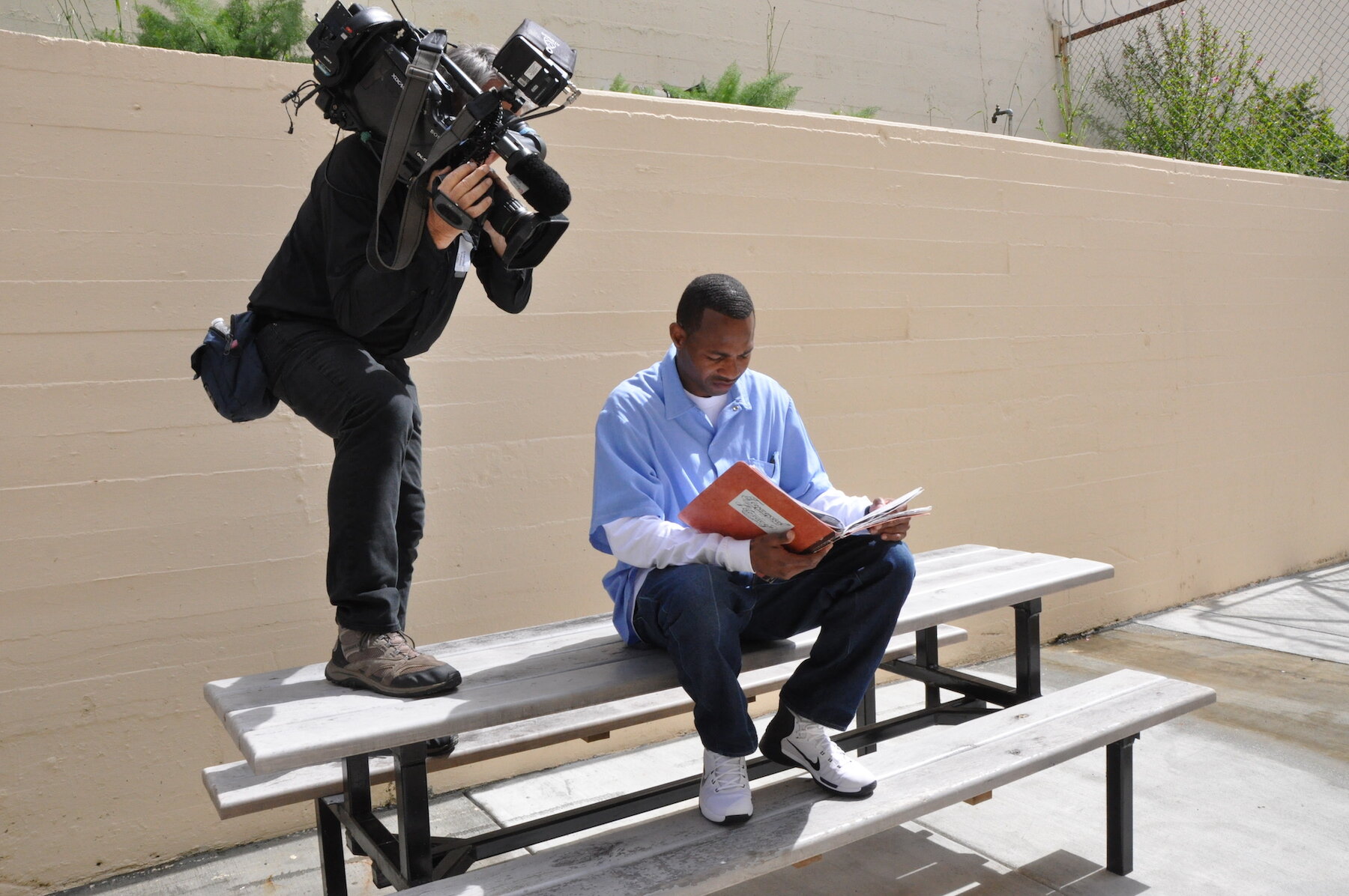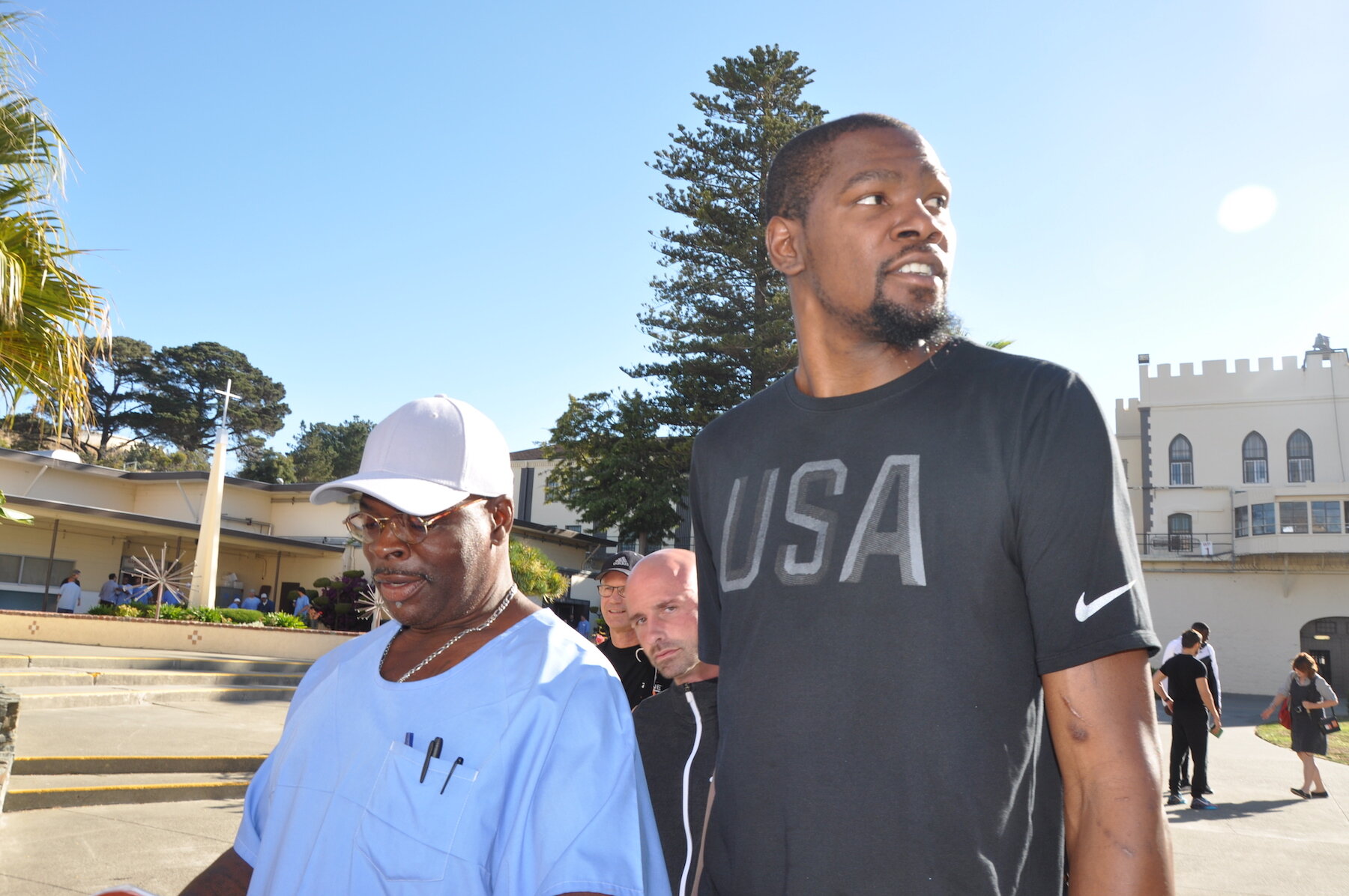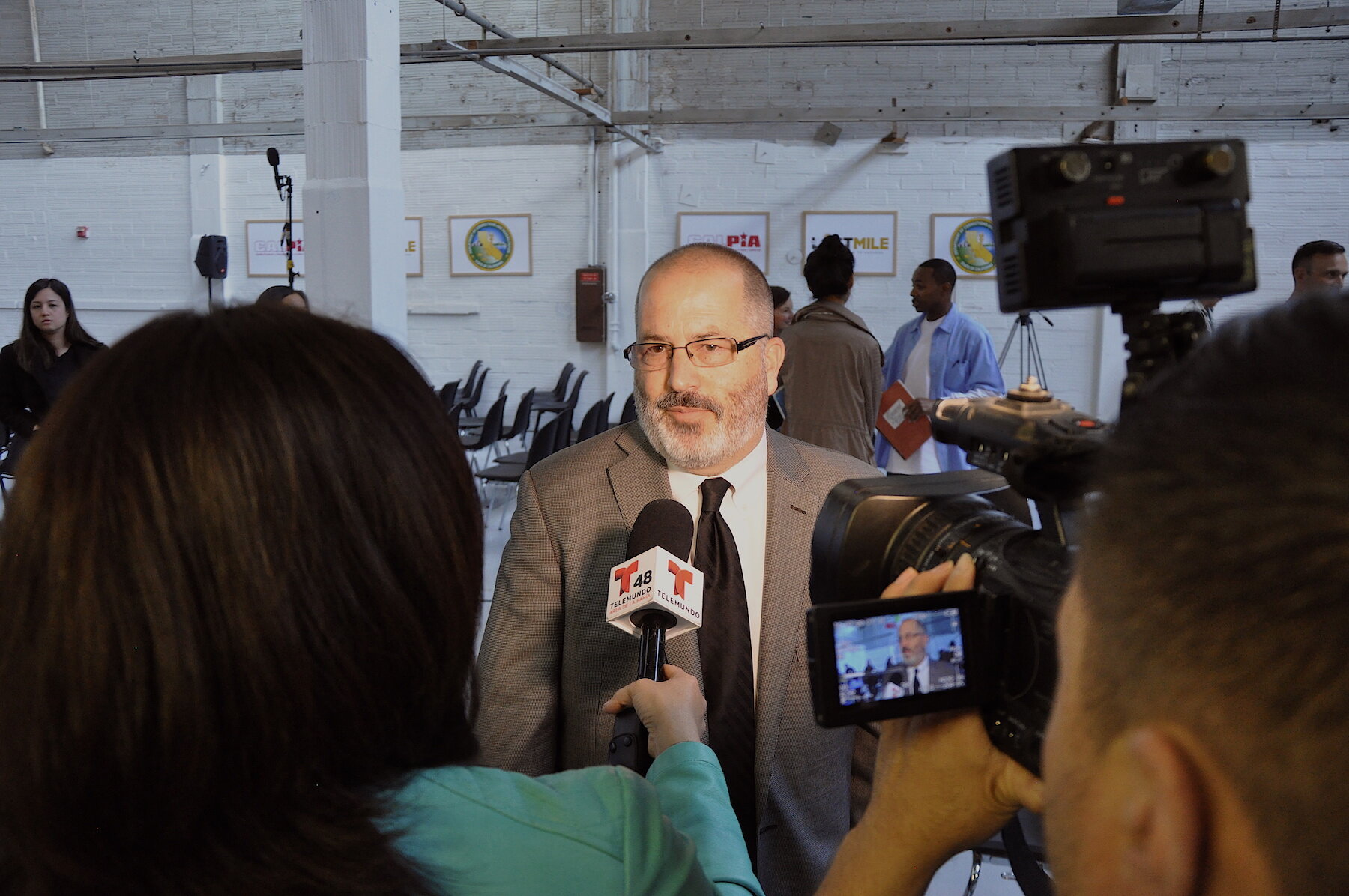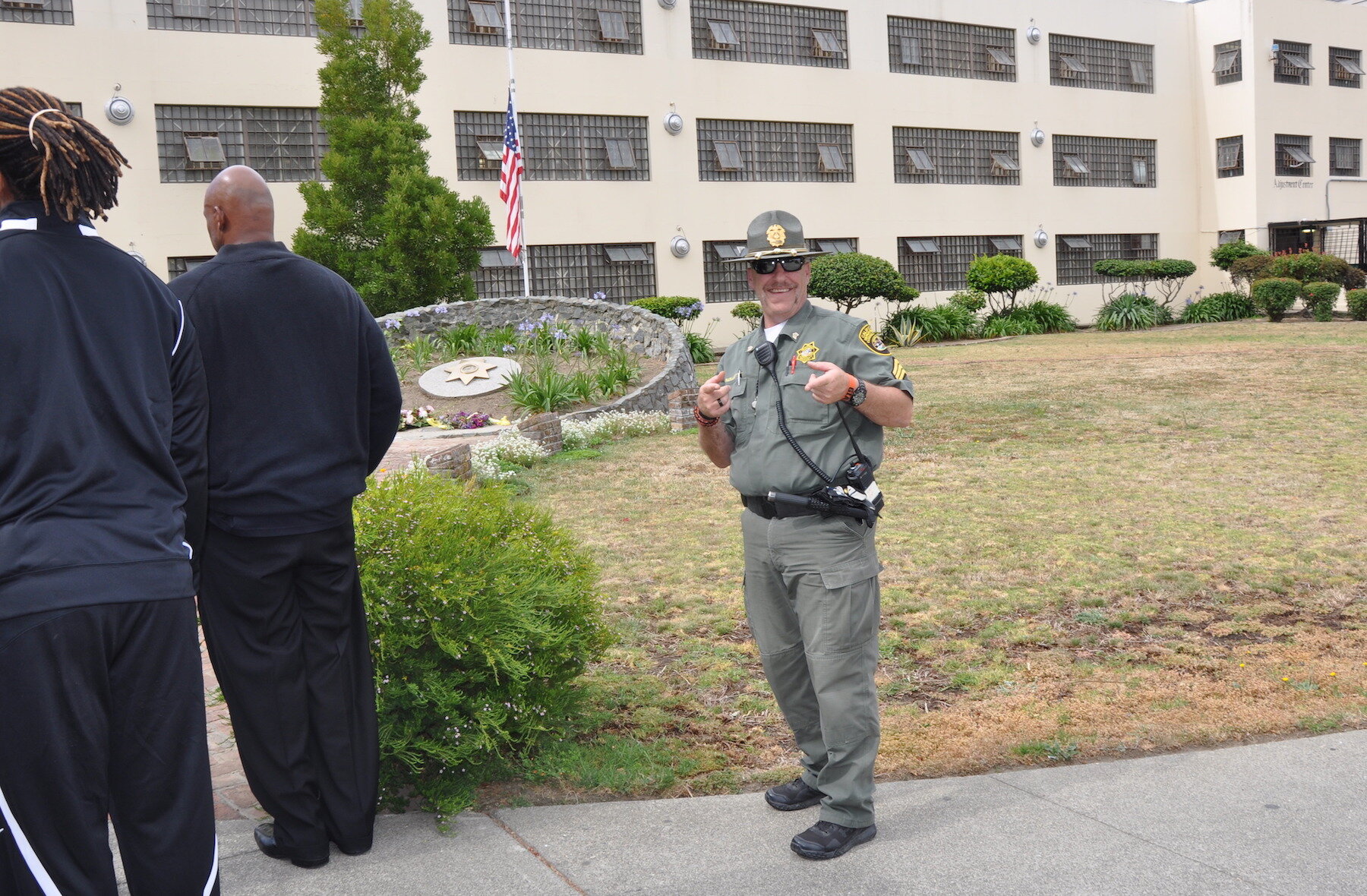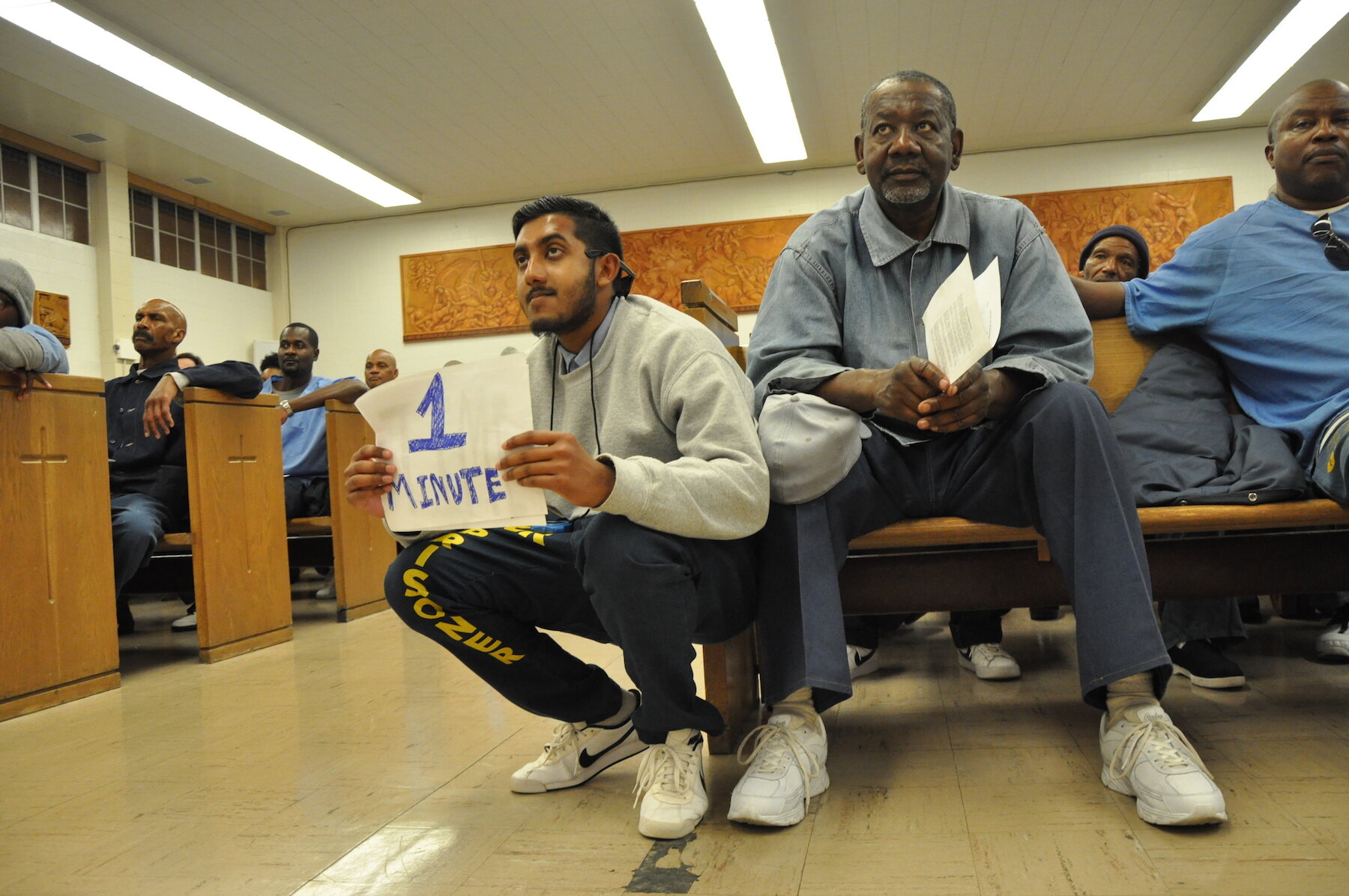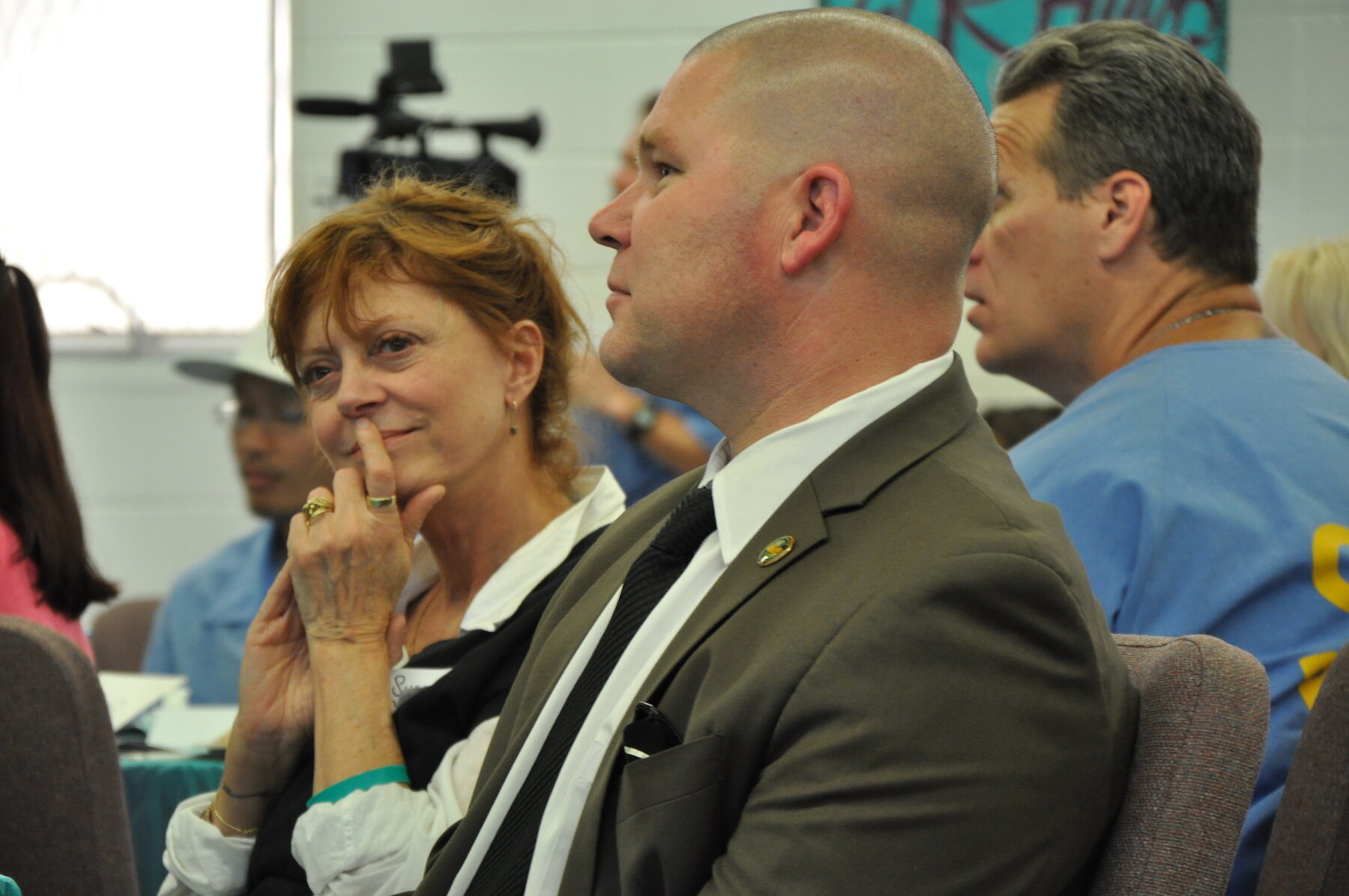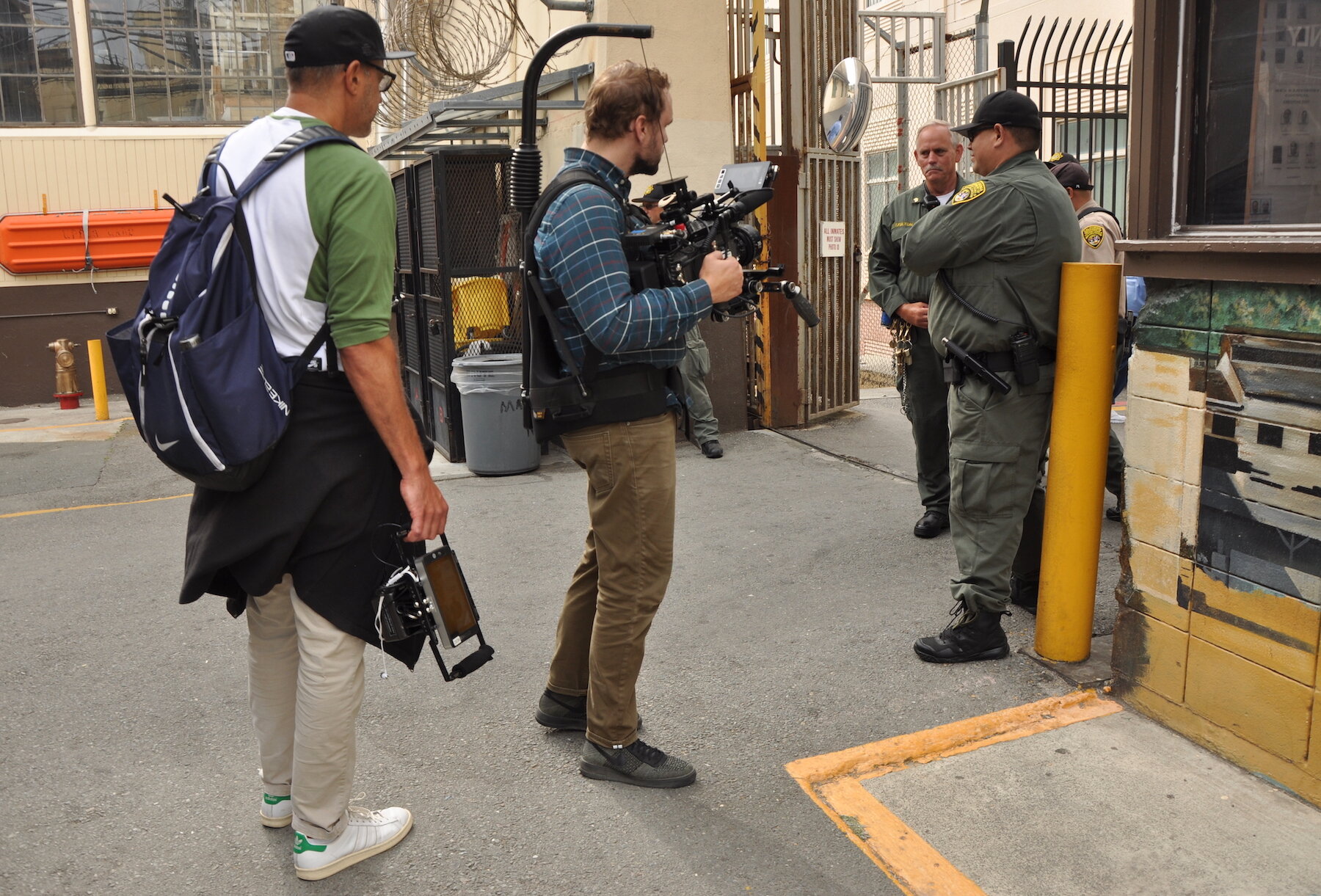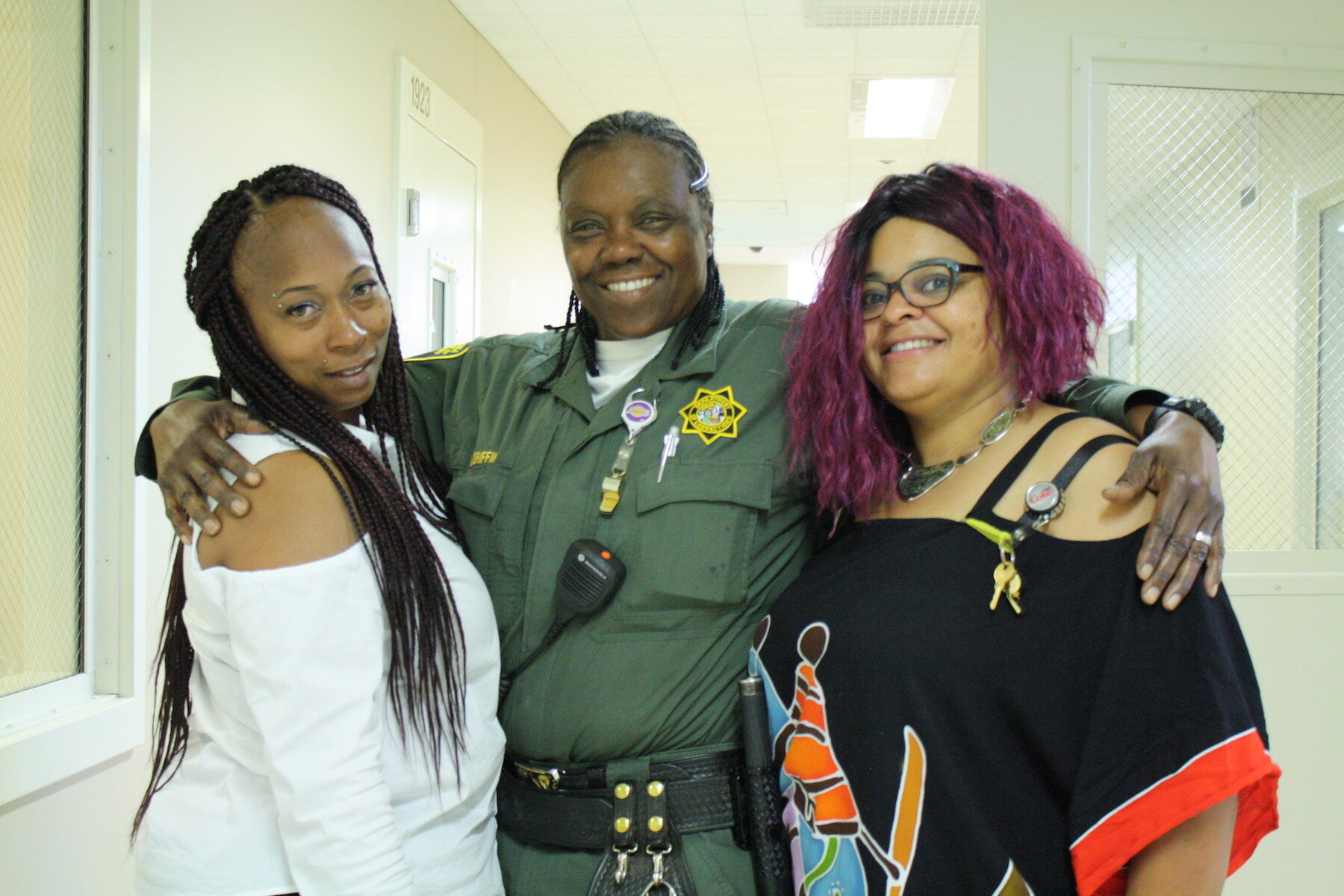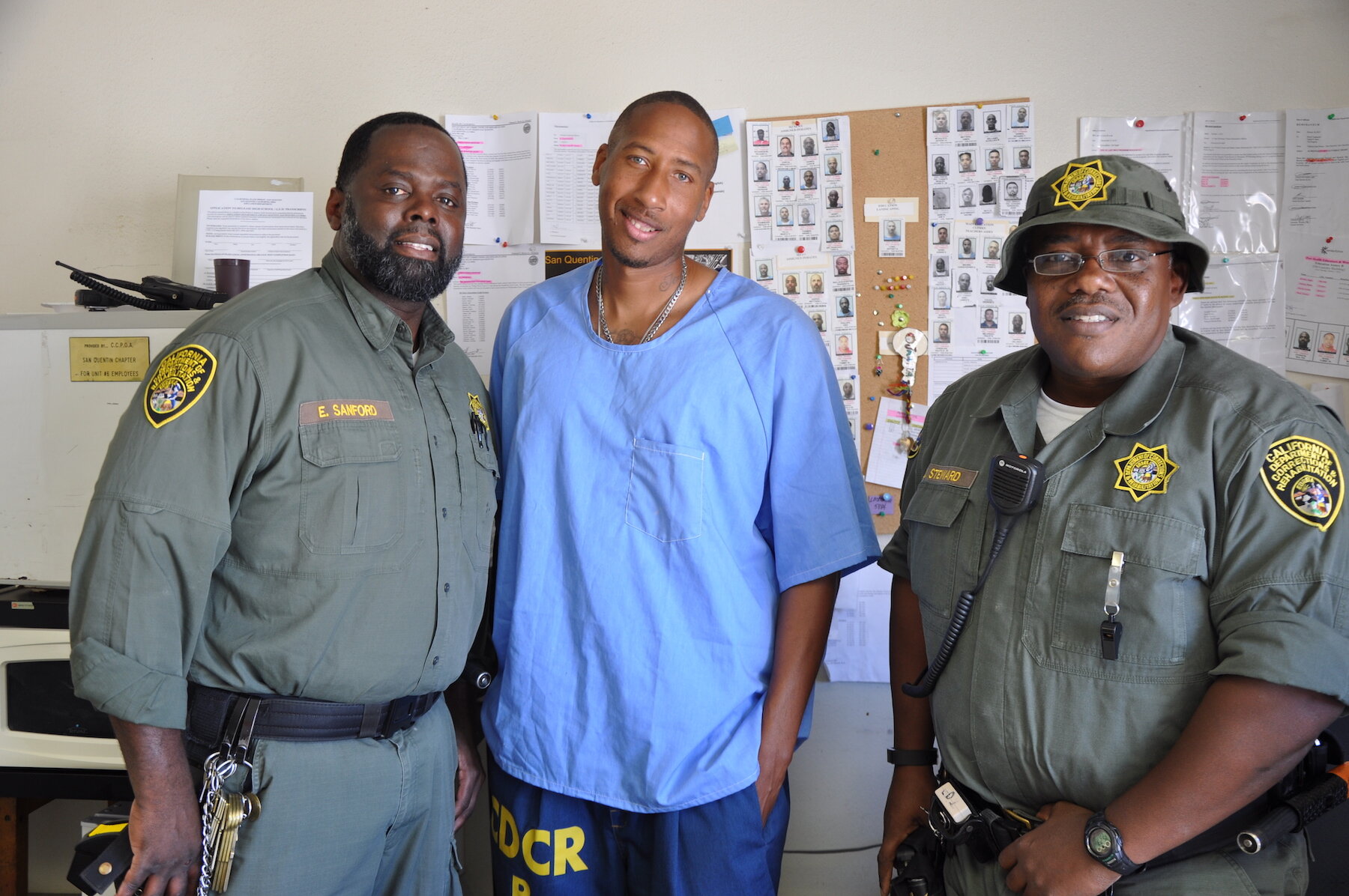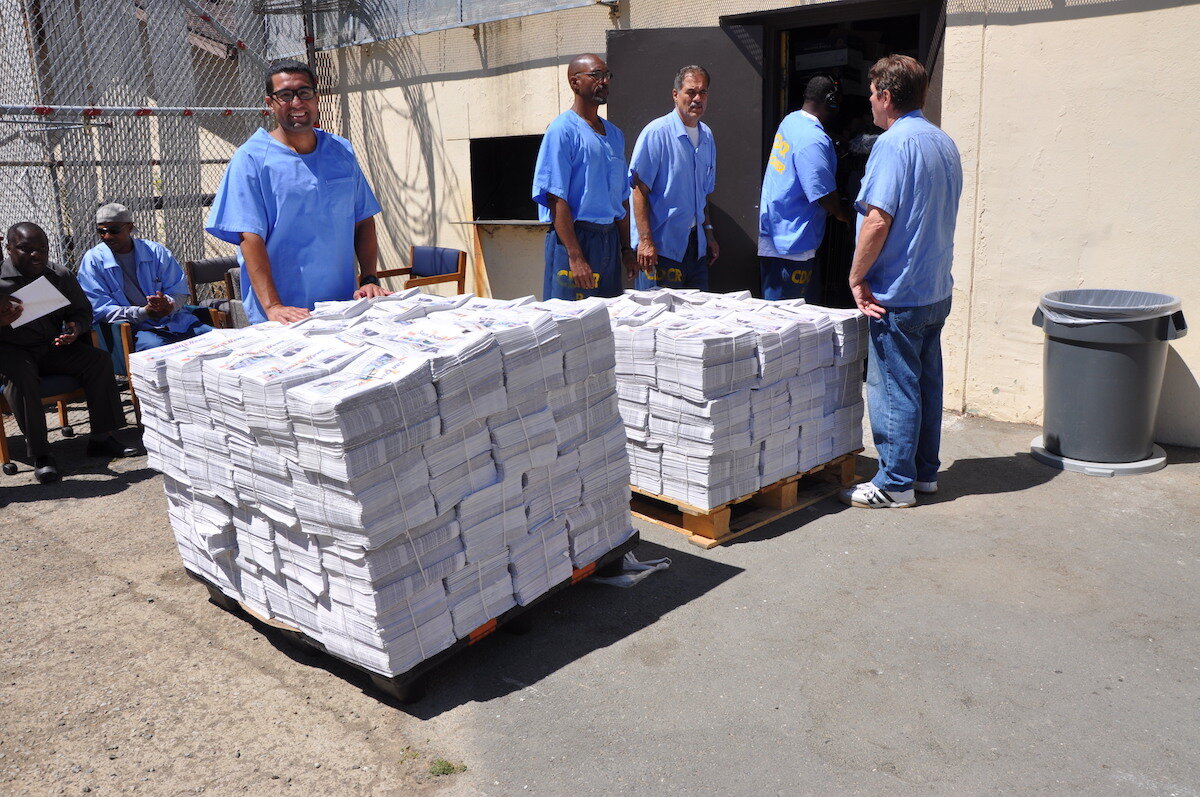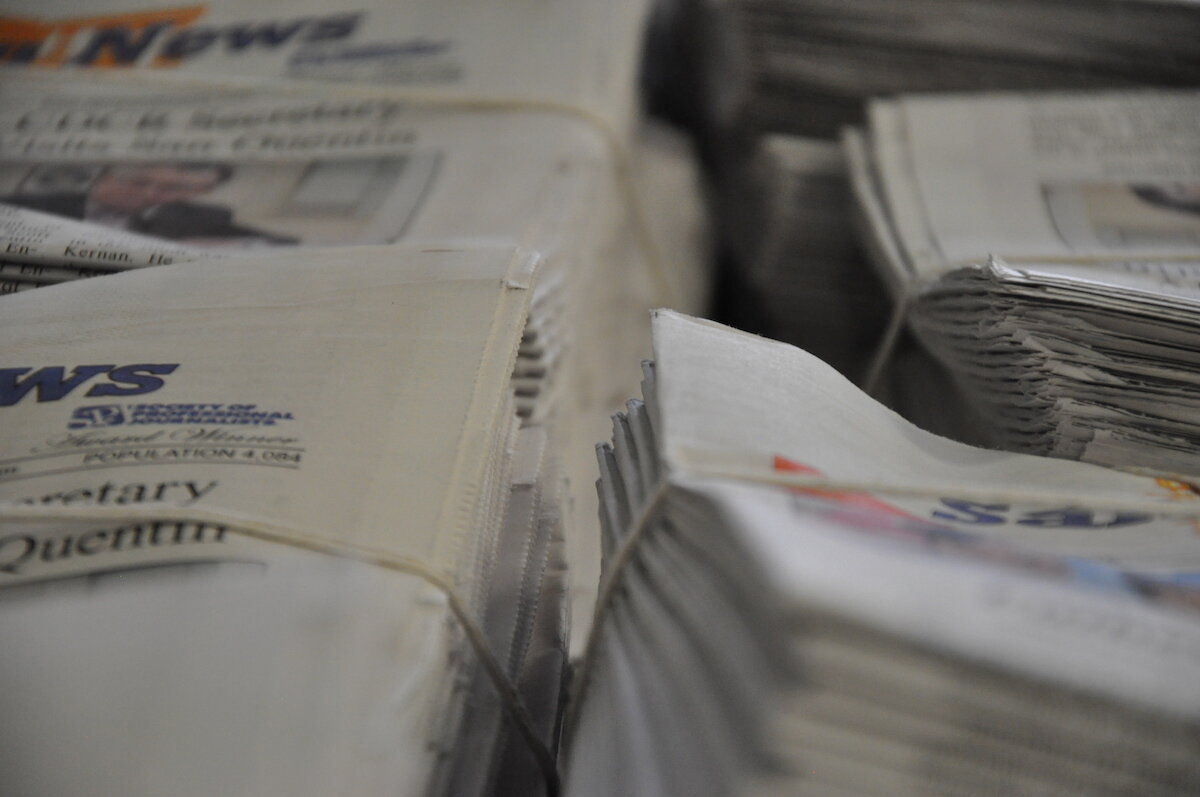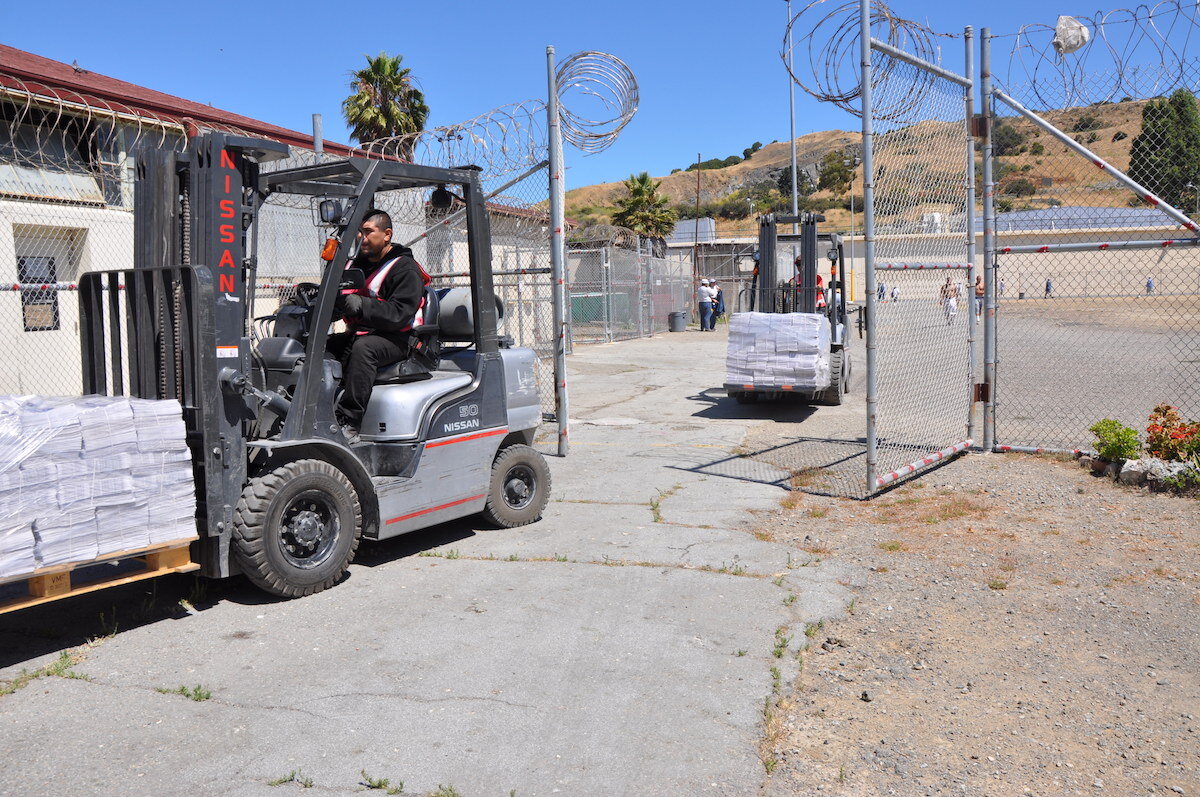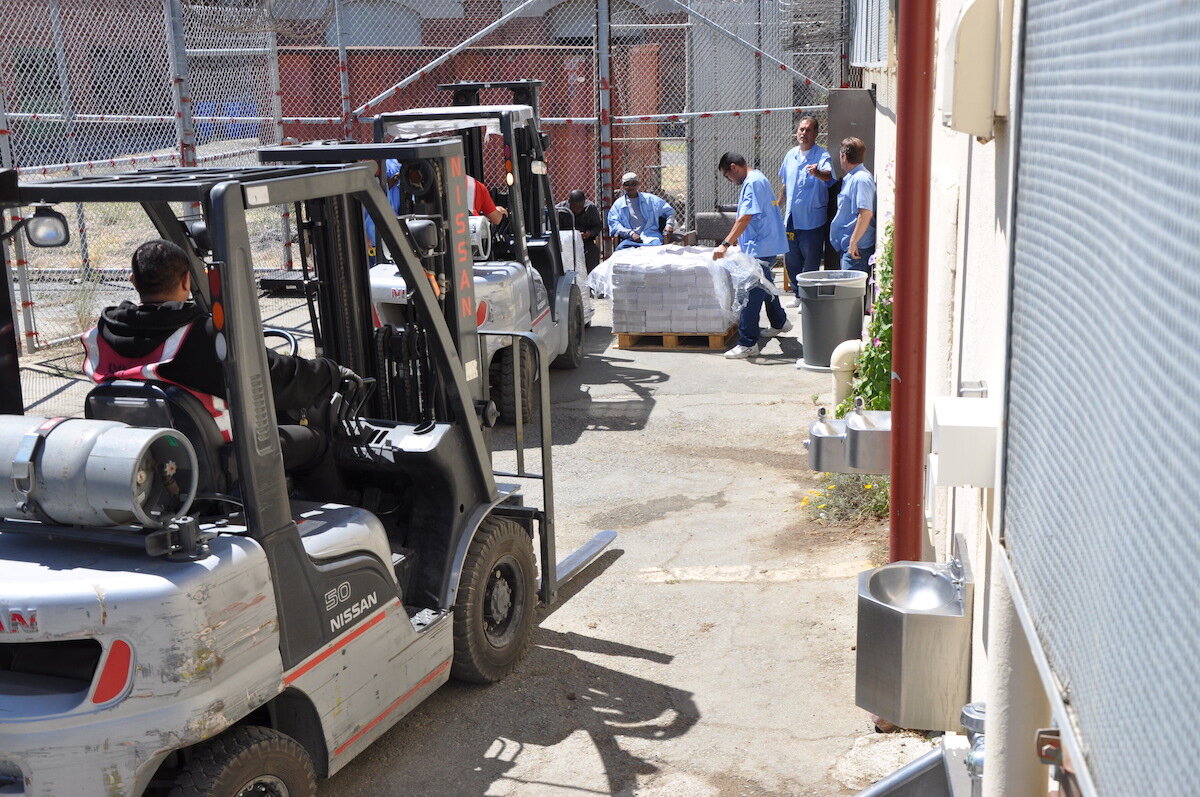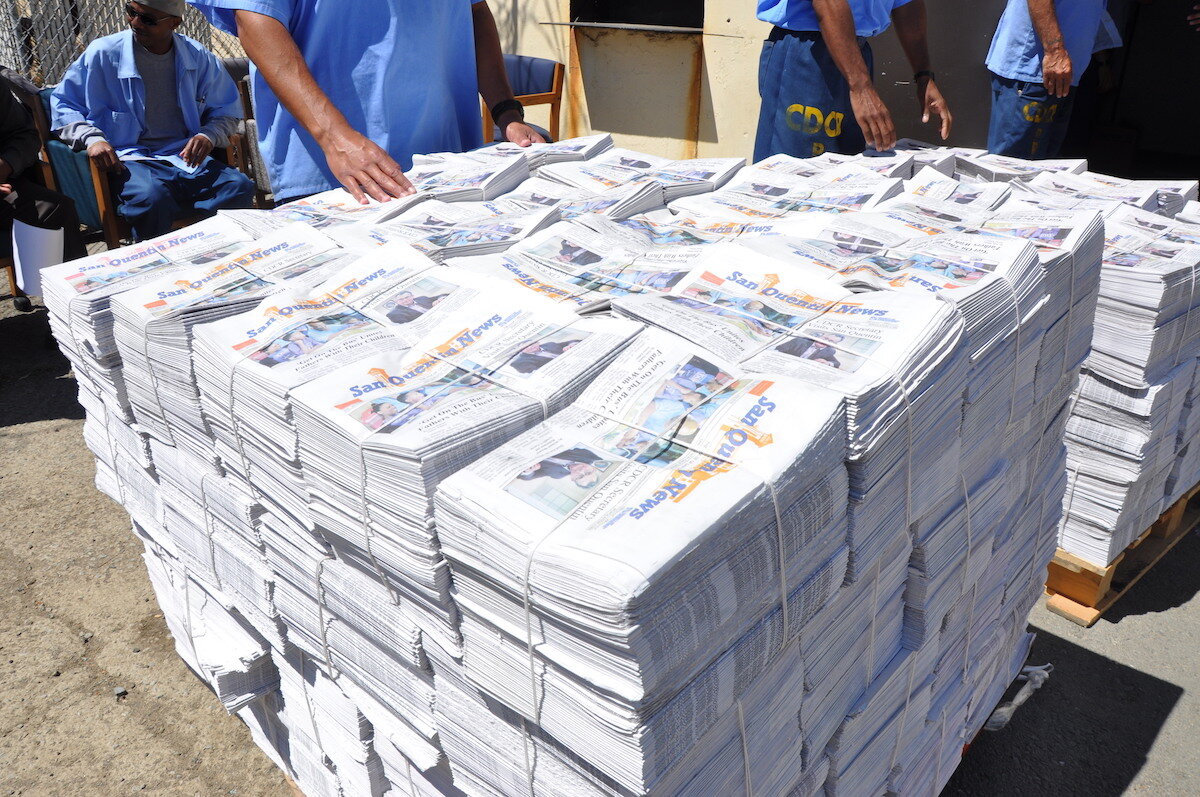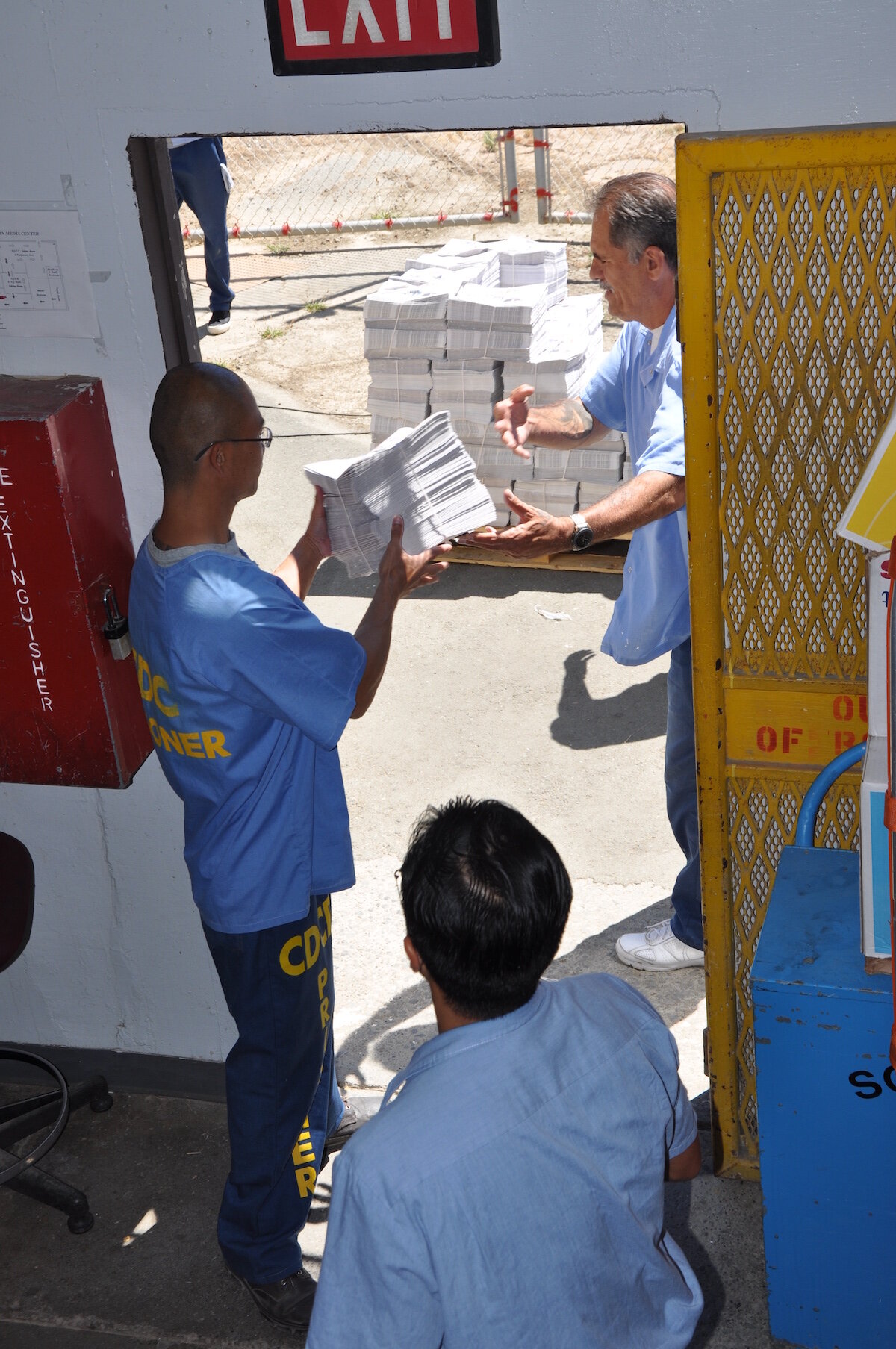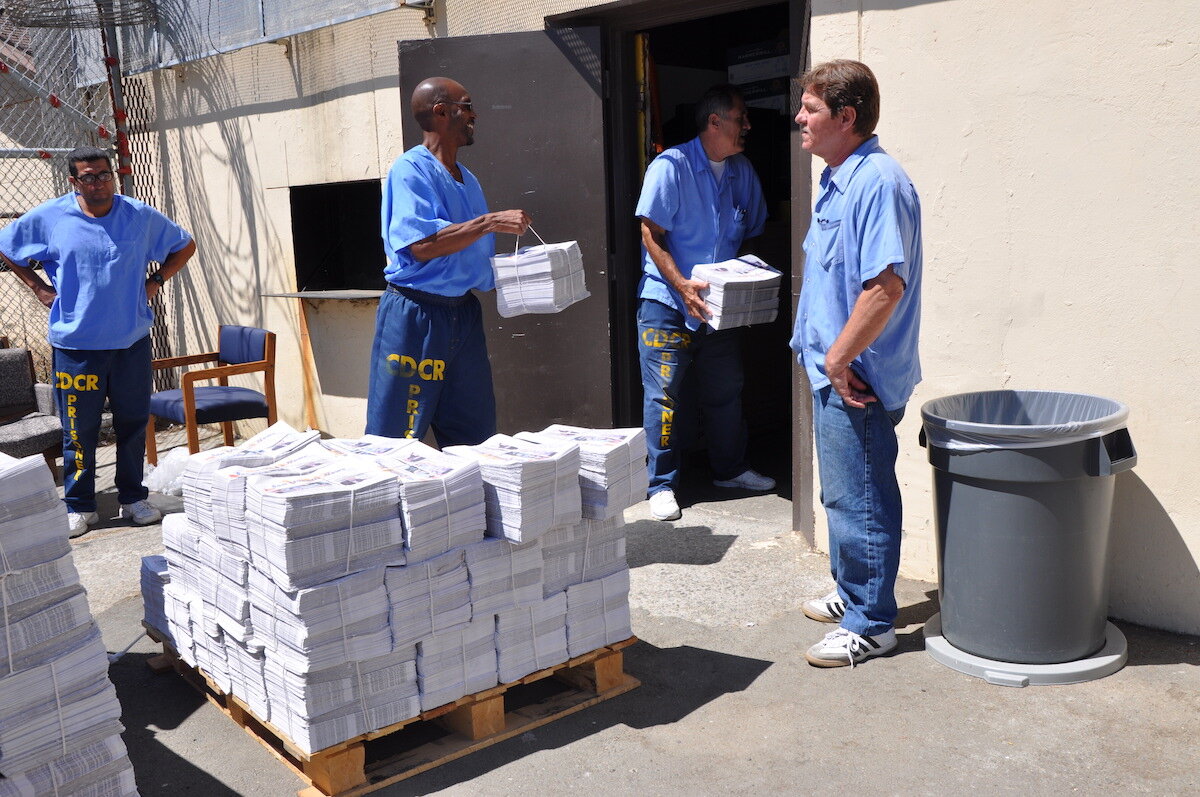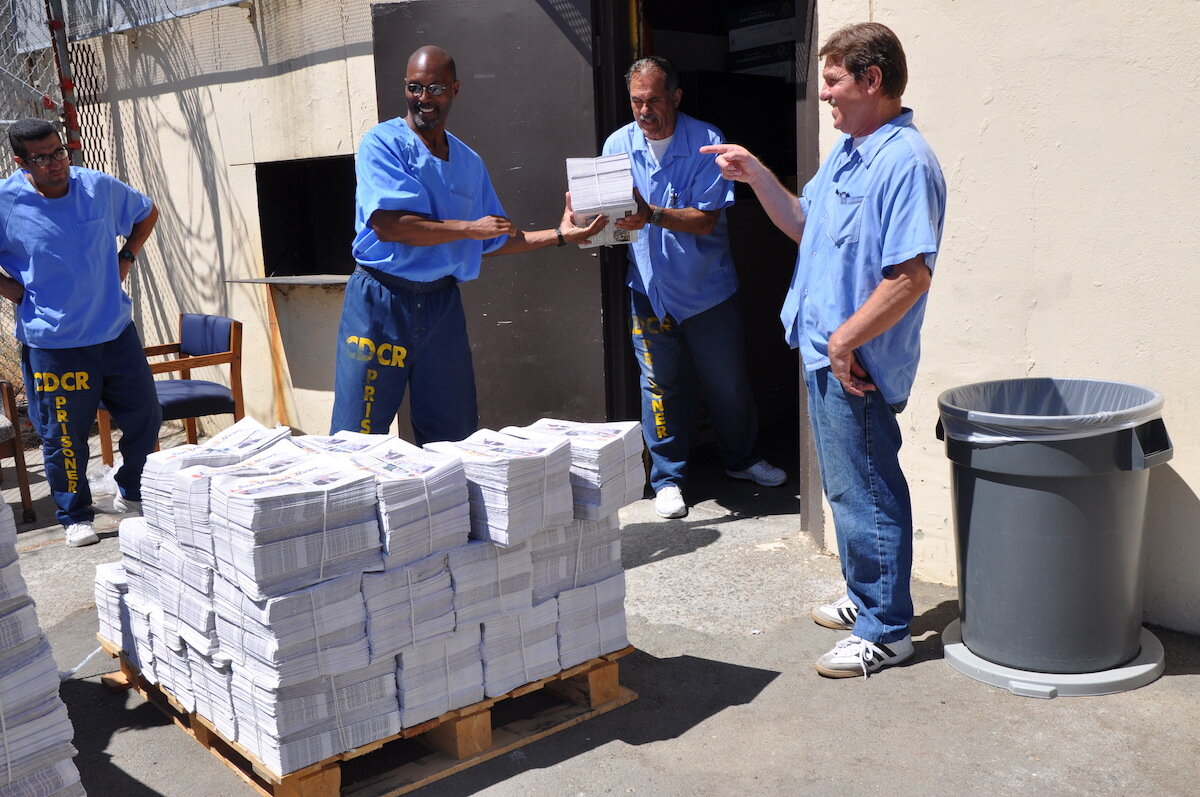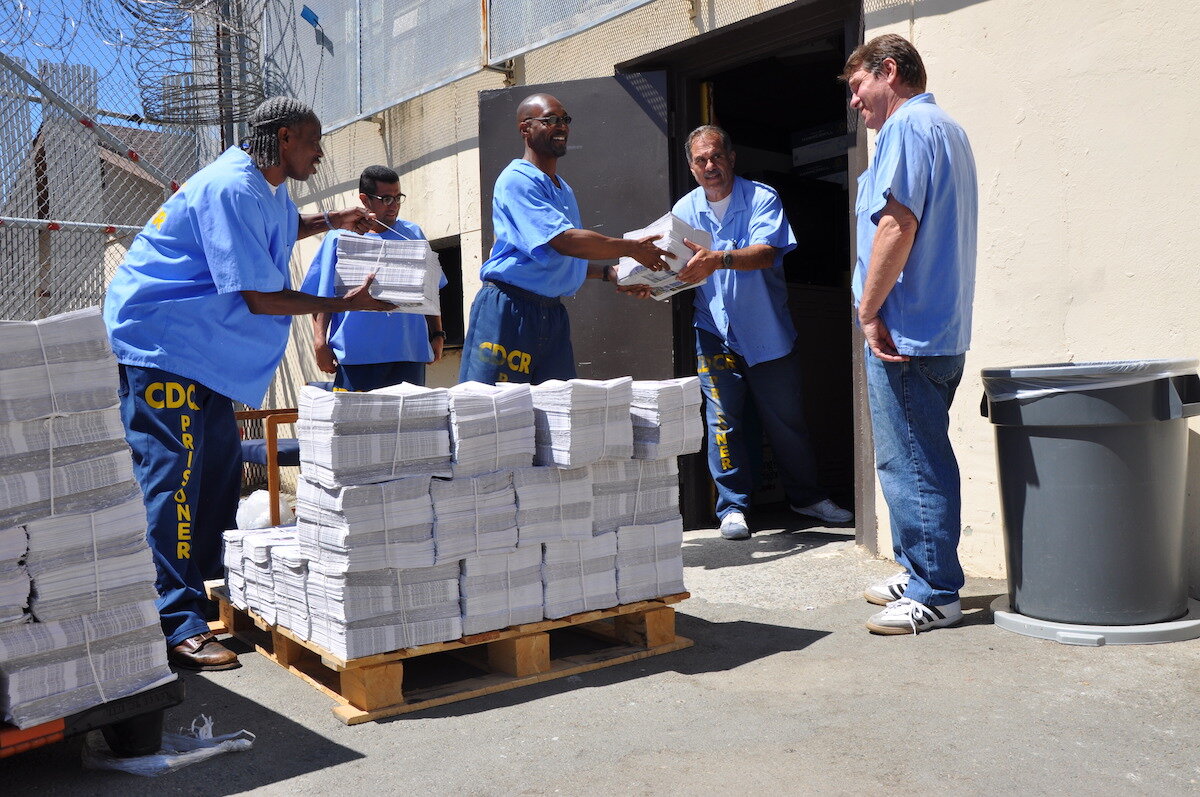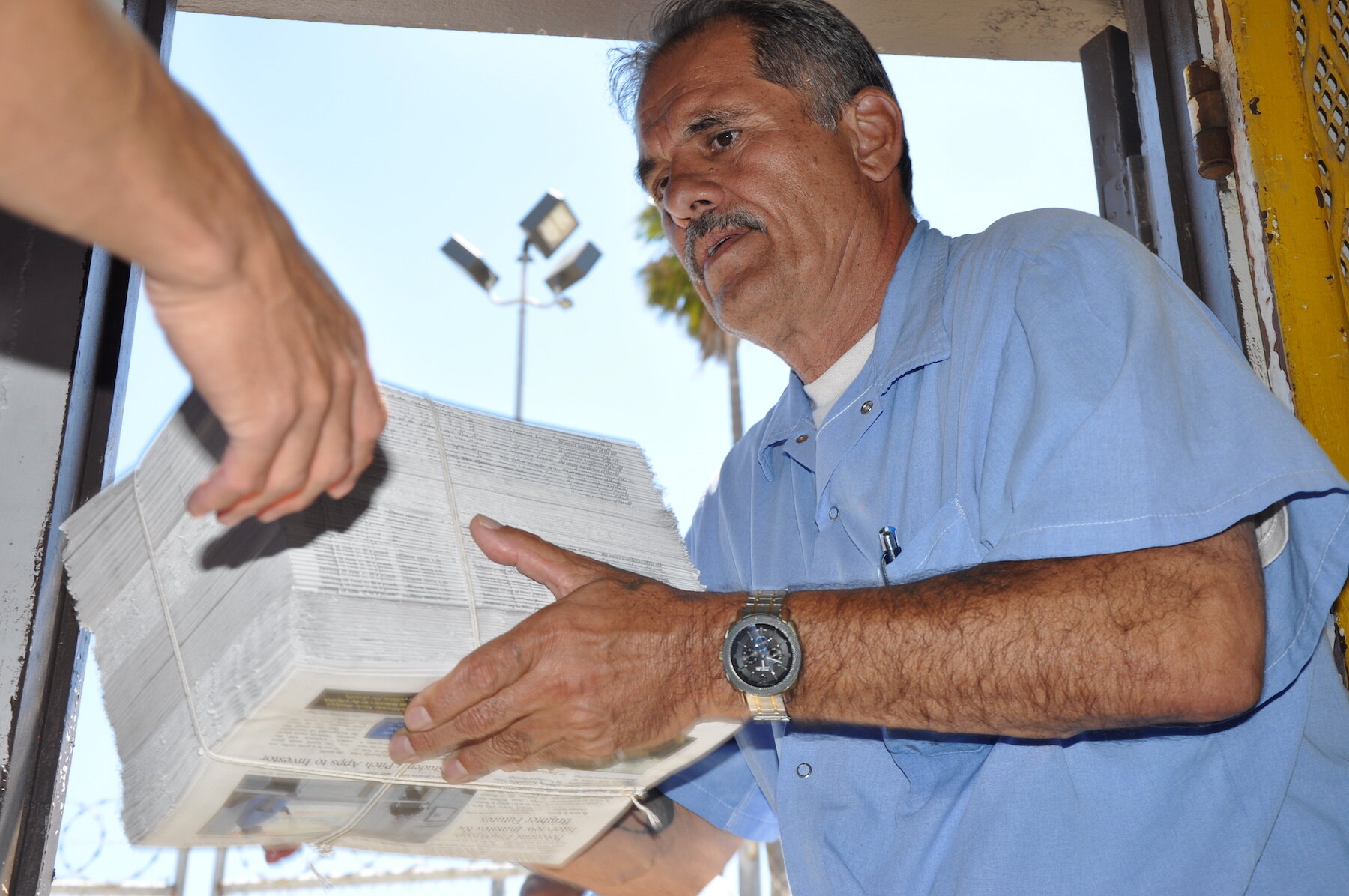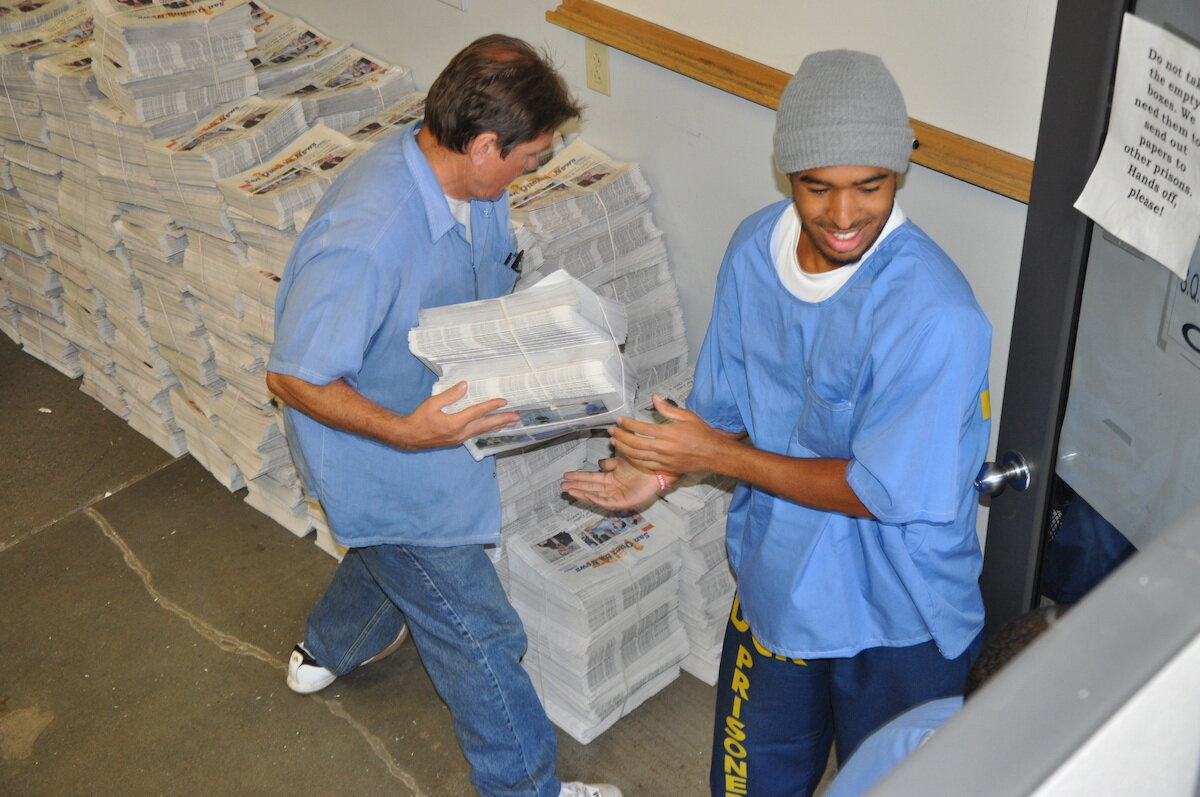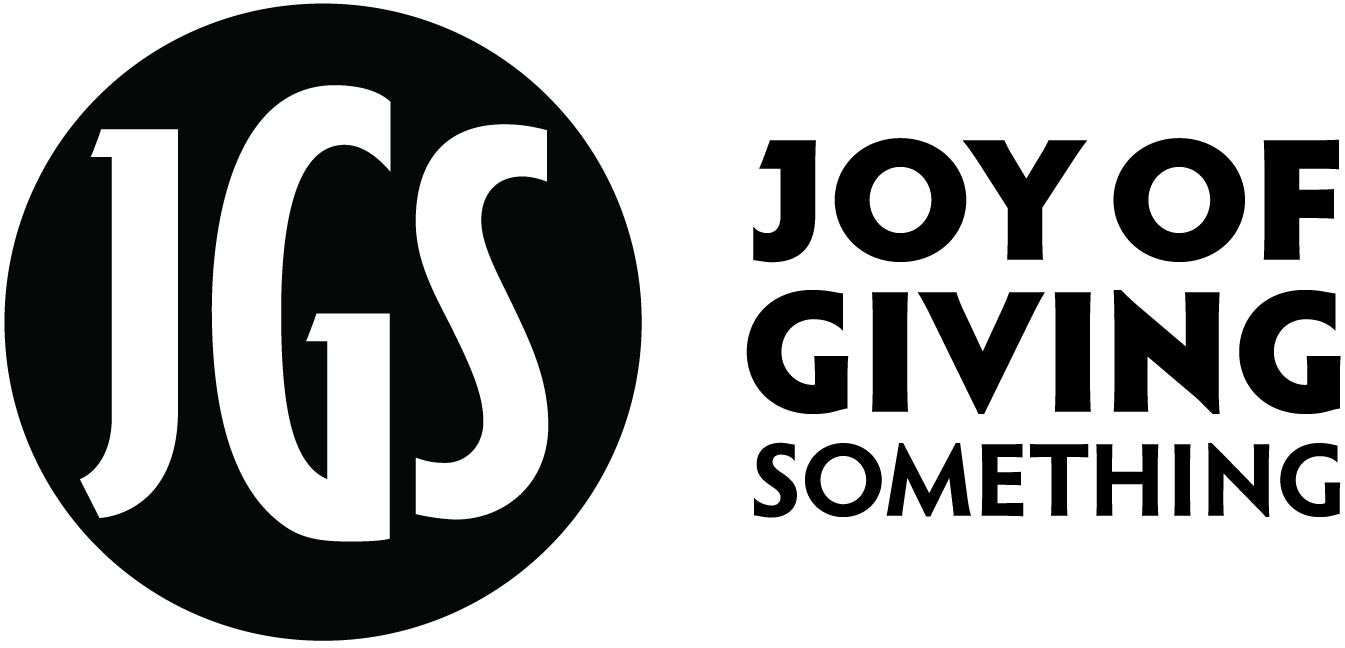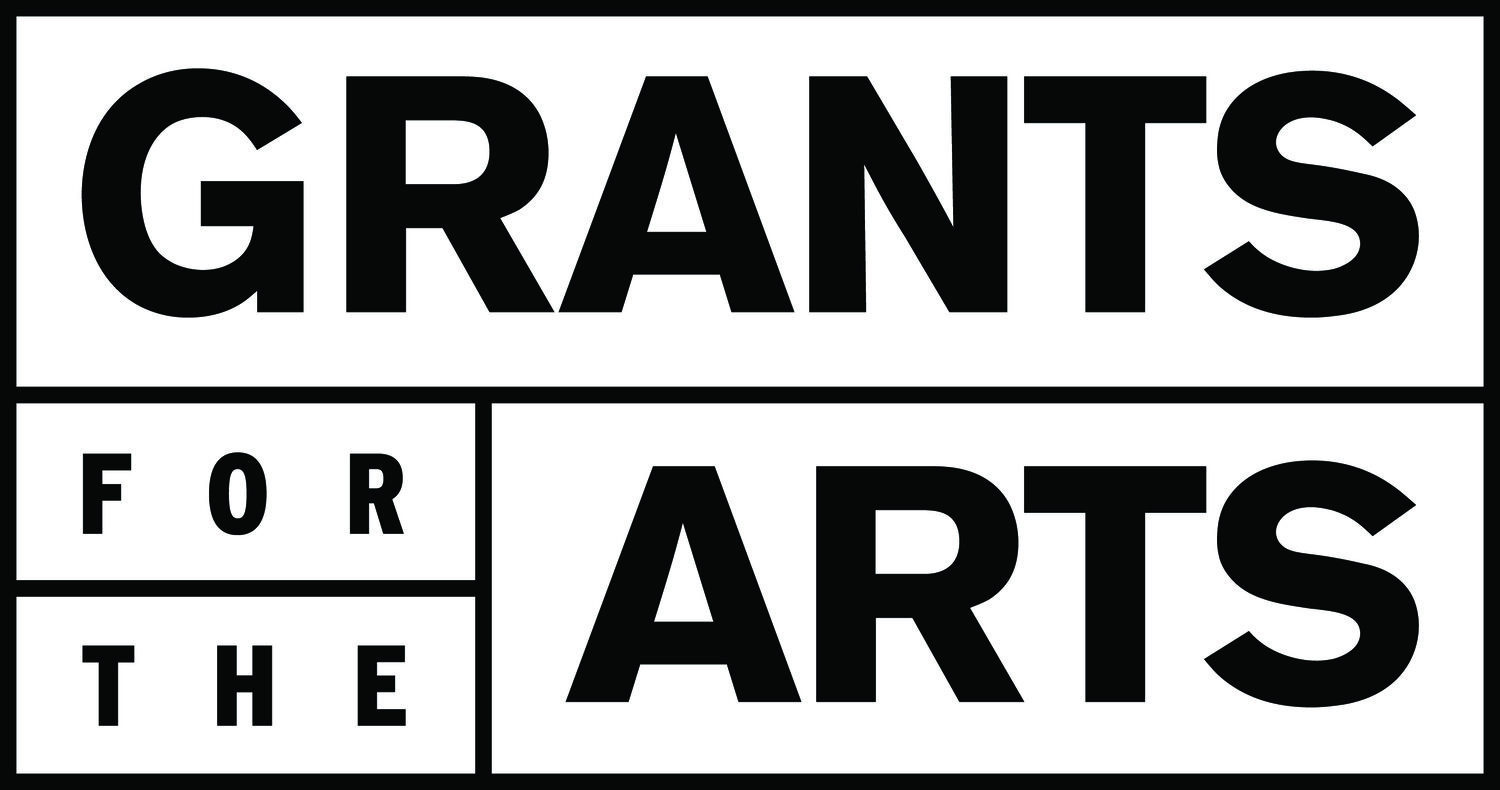CLOSE TO THE WIRE
Eddie Herena
Throughout the final four years of his incarceration (2015-2018), Eddie Herena worked as a photographer for the San Quentin News, the prisoner-produced paper at San Quentin State Prison. Self-taught on the job, Herena covered a variety of activities—sports games, arts programs, reconciliation groups, ribbon cuttings, to name a few.
Beyond just documenting events, Herena’s photographs reveal the peculiar process of image-making itself. Steady cams, RØDE mics, photo ops, TV crews and documentary film teams recur in his coverage. More than any other photographer, Herena witnessed San Quentin’s unique, outward-looking branded presentation of self. Herena worked with RJ Mickelson and curator Pete Brook to select 250 images from his archive of over 17,000 images. This interview includes a few dozen.
Herena sat down to speak with curator Pete Brook about his time as an incarcerated photographer.
PB: If you had to write a job description for a San Quentin News photographer, what are the character attributes?
EH: Respect. Self control. You have to subscribe to the San Quentin News vision. You have to be a team player. I really liked the job. Once I got my hands on the camera, I knew it was what I wanted to do. You must be able to take direction even from guys in the newsroom who don't know what the hell they're doing either! [Laughs]
PB: What is the San Quentin News vision you mentioned?
EH: San Quentin News certainly wants show that prison is not all about violence. There's positive stuff going on! That was our focus. Graduations, sports, the Golden State Warriors coming in to play our basketball team. We distributed thousands of newspapers to every single prison in California. Plus subscribers on the outside.
If you were to look at old editions of the newspaper, you'd find a section about incidents, stabbings, beatings. Prison is a violent place but not all the time. In the late 2000s, SQ News decided it wasn't going to cover stuff like that and instead focus on the good things brothers were doing, like getting their Associates Degrees.
PB: Can you talk about that a little about the particular character of San Quentin Prison?
EH: It's all about the location. The Bay Area. All these surrounding liberal cities. I think the college program--the Prison University Project--had a huge impact on the culture at San Quentin. And of course it did: there's people inside waiting, and wanting, to learn.
When I left Corcoran [Prison] there were no programs. We organized our own groups, but there was no outside support. At SQ, with all of us who wanted to see programs and all the Bay Area volunteers and initiatives, the two came together and it blew up, man.
PB: What role did the administration play in developing the program-heavy culture at San Quentin?
EH: The change in culture began with the prisoners, but that might just be me vouching for my folks. I longed to learn. The administration saw the efforts of prisoners and bought in. The administration responded to the credibility of the college program and similar groups. Prisoners would hook up with folks on the outside, design programs, and then pitch them as ideas or pilot-projects. Invariably, they flourished.
PB: The San Quentin News predates all these developments and the *opening up* of the prison to its many programs. At SQN, prisoners have been doing if for themselves for a long time.
How did you become a photographer with the San Quentin News?
EH: I was approached on the yard. I guess the guys in the newsroom thought I'd be a good candidate. There was another guy up for the job, but he was going to the [parole] board soon. SQN said, "If he goes to the board and he gets a date will give it to Eddie." The other guy got a [release] date and I got the job.
PB: So it wasn't about having experience with photography!?
EH: No. None of us had experience! It was about attitude. "Can this guy carry himself on the yard with all these visitors coming in?" Government officials, sports teams, Silicon Valley folks, famous people. It was about how you carried yourself.
PB: The editorial focus of San Quentin News is very positive, almost redemptive at times. What do you say to criticisms that the SQ News is rose-tinted reporting?
EH: Of course it is positive! We've already got a stain. Prisoners are already thought of as the scum of society. Why would we want to continue to promote that one-dimensional view?
PB: Over the 3-and-a-half years you were SQN photographer, did you have the camera in your hand every week?
EH: Twice a week.
PB: What was your favorite thing to shoot?
EH: Sports.
PB: What was your approach? What did you try?
EH: For basketball, I'd just post up under the rim. Baseball was the easiest: a pitcher, and a guy at the plate, and you know what's coming. A throw followed by a swing or a miss. Sometimes the teams didn't want me directly behind the catcher, so I'd get just off to the side of home plate, where I could frame the batter and the catcher. Sometimes the SQN editors told me to focus on a player. I was allowed out on the field, behind second base, one time. But only once.
EH: I got tired of doing all those graduations. At some point, Lieutenant Robinson would allow me go outside and fool around, take pictures of flowers. I used the camera on my own, with no assignment. Just learning the camera and different settings. The guards knew who I was and I didn't catch any flack from them.
PB: You like to photograph nature.
EH: For real. I spent so much time in just a few small areas, that when a little creatures came around that I'd never seen before... little red bird... it's significant. And I like landscapes, man.
PB: What options do you have to photograph landscapes inside prison?!
EH: We were in Marin County. It's beautiful outside those walls. Mount Tam is right there! Before you go down to the lower yard, you can see all the sky and landscape beyond. And I just liked taking shots of the prison itself; it's a unique place.
PB: Do you think you got better as a photographer?
EH: I think so. My first assignment was a Buddhist ceremony and ritual. I didn't know what I was doing! When I look at those photos now, ugh. People's heads are cut off. But I've improved my framing.
PB: I assume that guys liked having their portrait taken?
EH: Mostly. And I like taking portraits! A lot of it was me saying, "Don't look at the camera, look over here like, move your eyes over there..."
PB: Do the correctional officers (COs) like being photographed?
EH: No, I never took a CO’s picture unless I knew them and I'd ask. Sometimes, like when Kevin Durant and Draymond Green visited, they definitely wanted their picture taken and it didn't matter who had the camera! For the Durant visit, one CO brought his son into SQ, all decked out in Warriors gear!
PB: Tell me about the energy in the prison. When big sports-stars visit.
EH: It's wild! It's damn-near Game Seven hype! Some dudes would bring out stuff they'd made, banners and stuff. Everyone anticipated it. Even the nurses. It's the Bay Area: everybody's a Warriors fan!
PB: Kevin Durant, Draymond Green, Susan Sarandon, Ted Koppel, Gavin Newsom. The list of high-profile visitors to San Quentin is long. Usually those visitors are the event itself. What did you make of celebrity visits?
EH: Take the coding program. They're trying to prove the program's worth, of course. Many famous people like Lance Armstrong came in [at their invite] and so many others. The founder of the coding program is a venture capitalist, so he's definitely trying to promote it to add momentum and... make more money, I guess. He founded something great that nobody else was doing.
PB: The branding/events/outreach/promotion call it what you want is no different to what goes on outside. There's the work/the coding and then there's the telling of that work and the telling of that coding.
EH: Prisoners benefited from the program. If you learn how to code, you can make a 100 grand a year. So, we just went with things, but a lot of it was... how they call it?... a dog and pony show.
PB: Did you ever think man these public events with cameras and presentations were weird?
EH: Cameraman are always just doing their job, right? I had a job to do. For each assignment, I figured people would be doing the same shit: the people behind the event, promoting their program, would bring in famous faces, but also bring in the cameras to make sure that they captured the event.
I once made a picture from behind a podium. There's a hundred cameras pointing back at me, back at you.
PB: You're less cynical than I. You had a job to do and they had jobs to do and the cameras and speeches etc. are just how those things play.
EH: If I wanted to be cynical, I could identify programs that brought in a lot of people and cameras to a lot of launch events.
PB: This is a box of condoms.
EH: That box is located in the Education Building right across from the officer's desk. That thing never got touched. There's other boxes of condoms in the prison. Homosexual activity amongst prisoners is still considered shameful. There was one box as you go up to upper yard, and it was more discreet. The box in the most discreet place was the one that was always empty.
PB: This is a cell phone in prison.
EH: They wanted they wanted a picture of their Facebook Live and like they wanted. It's a staff-members phone. The Likes were flashing across the screen and one of the newspaper guy asked me to take a picture
PB: You made a couple of photographs of Gavin Newsom.
EH: He was a good dude. When he came in for the TEDxSQ event, he wore blue jeans and blue shirt!
PB: I saw. Visitors are not allowed to wear green like the guards, nor blues like the prisoners. Do you think he deliberately flouted the rules?
EH: It was, IS, a strict rule. No one, NO ONE, visits wearing blue jeans and shirt. Please... I mean... "I'm Lieutenant Governor, who's gonna tell me no!?" Susan Sarandon was friendly. She mingled with folks and seemed down to earth. She had a cast on a foot and she's still came in to visit.
PB: Here is Judge Thelton Henderson who has been key in holding the CDCR accountable in their duty to provide good healthcare to prisoners. Guys on the inside knew him?
EH: He's a hero to prisoners. That's down to his story, where he came from, what he's done. In the sixties, he was the first black attorney in the Civil Rights Division of the Department of Justice. And what he has done for prison reform. Everyone respected Judge Henderson.
PB: What is this scene? Presumably a father and daughter?
EH: There's a story behind this picture. It's the first time he's seen his daughter in a long time. She's probably 11 or 12 years old. He hadn't seen her since she was a baby.
PB: There's no control over their emotions. It's raw. Very different to the photos ops and press podium shots we've just mentioned.
EH: This event--the Get On The Bus visit day--was one of my favorite events to photograph. Everybody was so focused on their family. I was just trying to find the good candid shots.
PB: There's hundreds of events that we could talk about in San Quentin, right? A lot of them mirror the same concerns that people have in outside society. It might surprise some people, however, to see a breast cancer awareness walk and fundraiser inside San Quentin.
EH: I was in that in that program myself. It was started by a couple of guys who wanted to talk about cancer awareness among their peers. Maybe they got the idea from watching the Avon Walks on TV? They organized that whole event.
PB: The SQ veterans group do a toy drive each December.
EH: Yes. They got connected with the Marine Corps toy drive--Toys for Tots. So, the Marine Corps donates toys to the veterans group and through administration the veterans group is able to give away toys to prisoners' kids on visiting day. I knew the father of those kids. He played baseball. They're there out of pure curiosity. They got the toys later.
PB: What parts of prison life would you have liked to have photographed (so an outside public could see) that you just weren't able to photograph?
EH: Death row. I always wanted to go to death row. A group did to a poetry slam with men on death row. In those cages, they're are all death row inmates, but that's not the death row cellblock. I wanted to see the row for myself. You hear so much about it. I wanted to photograph their exercise space where you get 1-hour out by yourself each day, in this area like a bunch of dog cages. That was something that I'd like the public to see. Maybe they've seen it already?
PB: I can picture those cages because I've seen them in a TV documentary.
EH: In this picture is the instructor and three guys on death row.
EH: The instructor worked in the mental health, if I recall. She had the idea of starting a poetry project for death row. She wanted to engage these guys who are pretty much forgotten inside San Quentin. A creative outlet.
PB: It's a strange photograph. All three guys are smiling. It seems like everyone is happy to be in the event and happy to be photographed?
EH: I was kind of confused. To me, to think you're on death row. Maybe you did some real bad shit, but you know you're going to die. And there they are! In cages... and I'm taking their picture.
PB: And you photographed the unusual set up for visits to guys on death row.
EH: When you want to come visit your loved one, if they're on death row, you gotta get in a cage too.
PB: It seems so crazy that the prison has built and maintains this hardware: cages to fit six people or whatever. I'd never seen visitation for death row prisoners until I saw these photographs. What do you think about the death penalty?
EH: I don't think we have a right to say to another "You deserve to die."
I don't care what you did, it's not right. It's virtually the same story for every man on death row: They grew up in a certain neighborhood, they'd gang bang because that's all they'd see, and they'd do some horrible stuff. But still, I'd never vote for the death penalty. If I had the power to get rid of it, I would.
PB: On the production of the newspaper, what are the logistics?
EH: It's a full operation, man! We have writers who report stories. It all gets put on hard-drives and our civilian colleagues at the paper take them to the printing press in Marin. They all get shipped to wherever they're going. A few thousand papers come back into the institution to be distributed everywhere: West Block, North Block, East Block, Hospital, dorms, H unit. We make sure we have like a nice stack for our visitors and volunteers too.
EH: Juan Haines and all the senior staff are really passionate. They write to inform and entertain. But they write to correct the narrative; they write a positive narrative. They seek out guys that are doing incredible things and they write to share those people and things with the world. They're always trying to shed some new light. They love what they do. Of course, it comes with perks too... free coffee!
PB: And, for you, an excuse to approach people.
EH: Yes, you get more freedom to move... and you get a reputation. The press passes given by the administration allow us to at least request going some place prisoners wouldn't usually be permitted. We have access to more than the average guy.
PB: Would you ever want to go back in San Quentin make photographs
EH: Yes and no. It's different when you're a photographer AND actually a prisoner; you have credibility if you're a prisoner with the men inside. [As a photographer] I think I lost something when I was released. If I went back, I'd just be like everybody else, right?
When I was inside, it was my world and the people my friends. They look just like you or I, they smile, they laugh, they play baseball, they have moms, they have sons and daughters. They didn't leave their humanity at the prison gate.
And, you know what, somehow, SOMEHOW, I knew that I would be allowed to take these photos with me when I left prison. I always had that in the back of my mind. I wanted an opportunity to maybe show the world something different.
ABOUT THE ARTIST
Eddie Herena
I was born and raised in the Bay Area and spent most of my young life in and out of juvenile detentions centers where art, specifically drawing and handwriting, was practiced among the population. I wasn’t good at either, but I admired the art and the artists. When I landed a photo gig for a prison newspaper, while serving out a life sentence, the lens became my pencil and the images my work. Most of the people in my photographs are friends that have either paroled or are still incarcerated. When others get a chance to see my work of incarcerated people my hope is that they see themselves.

